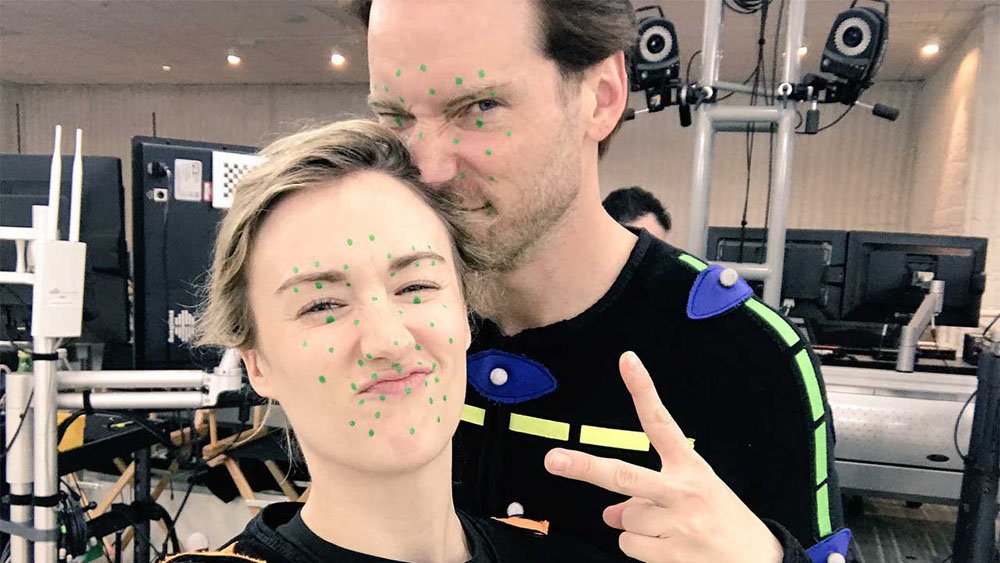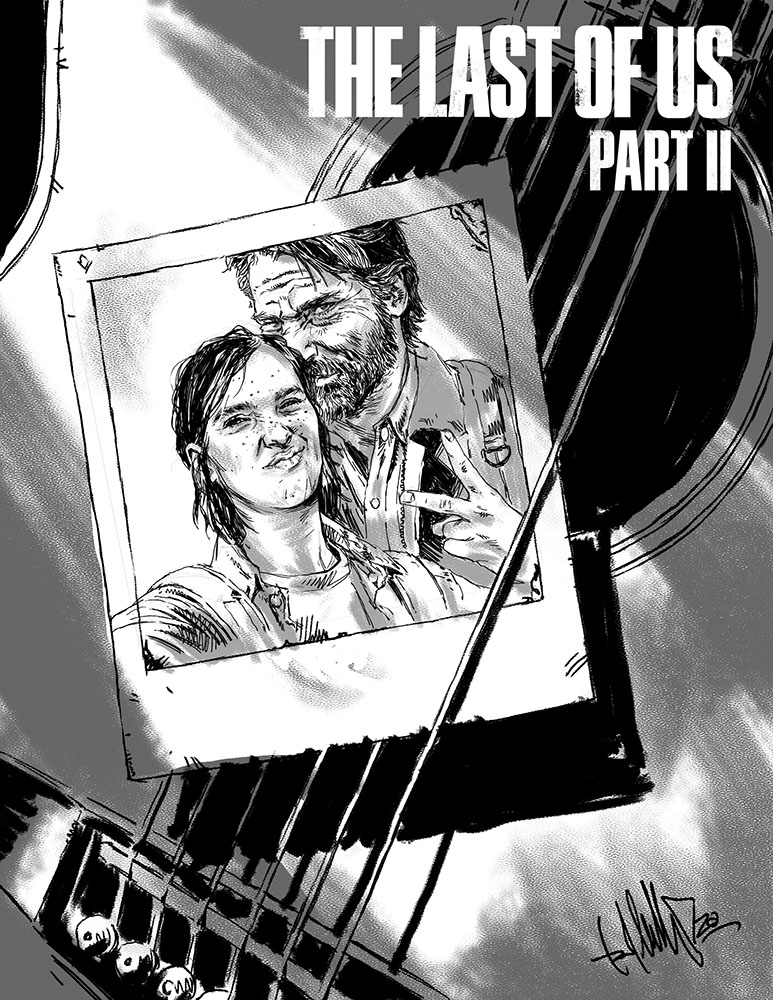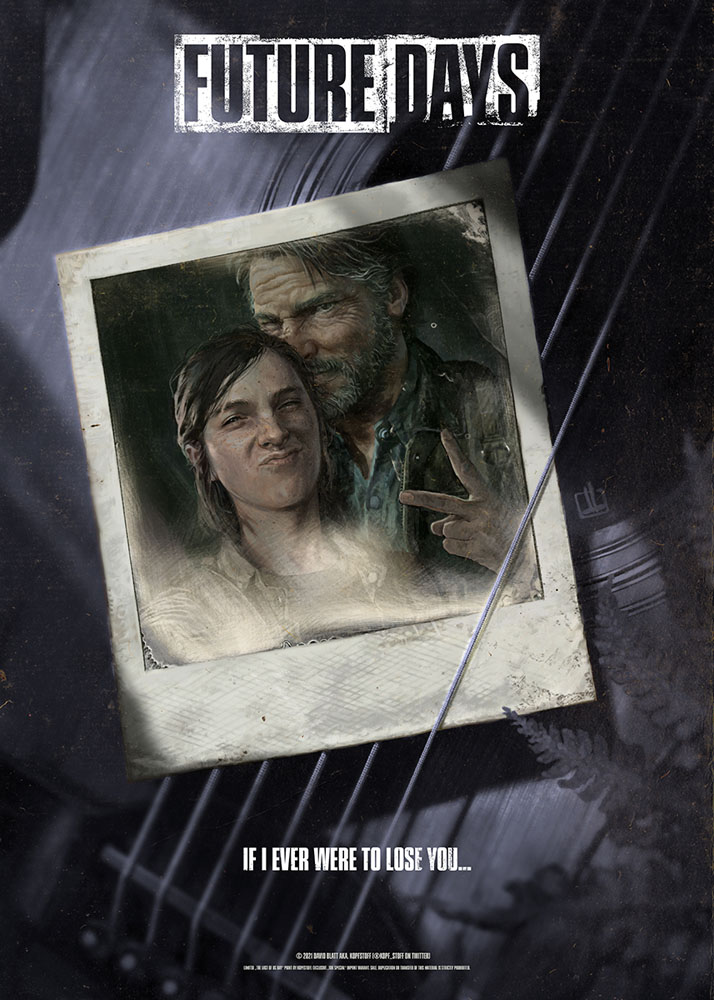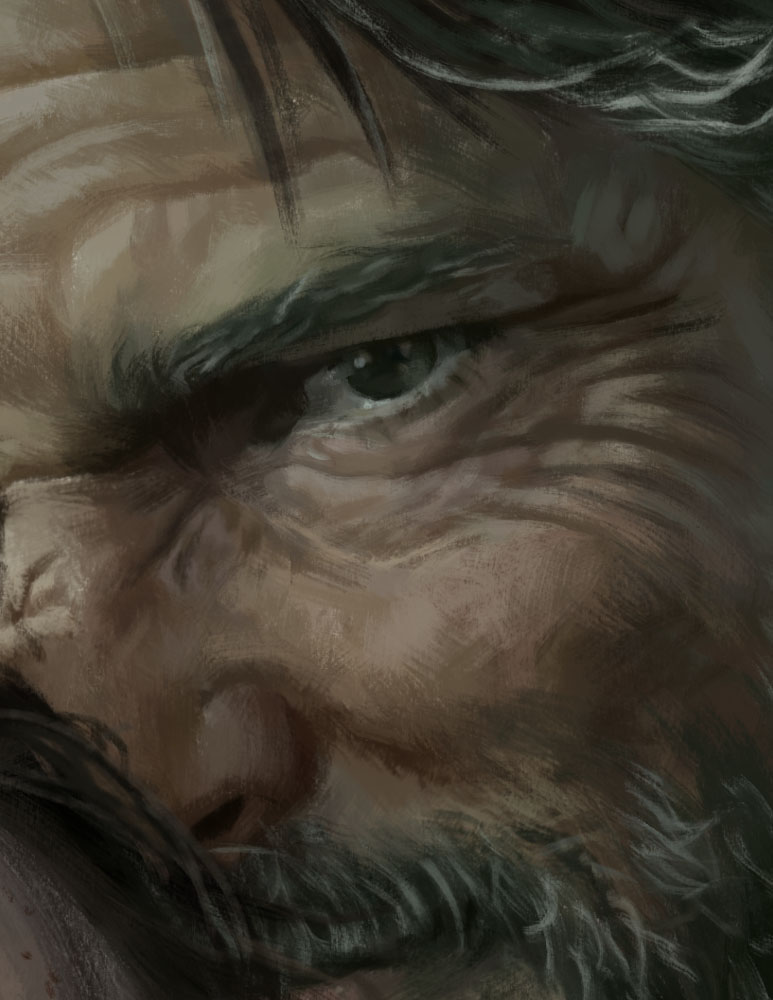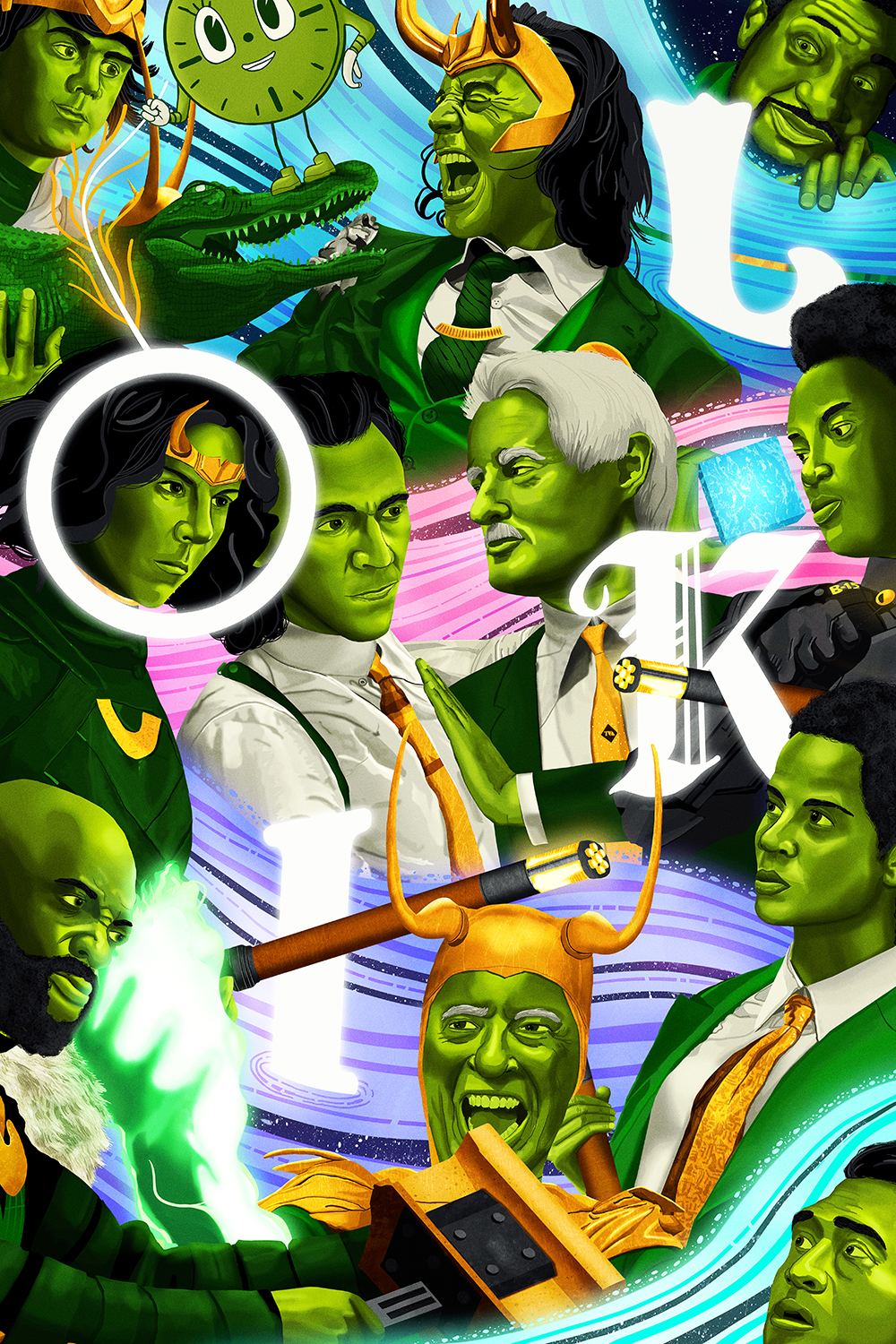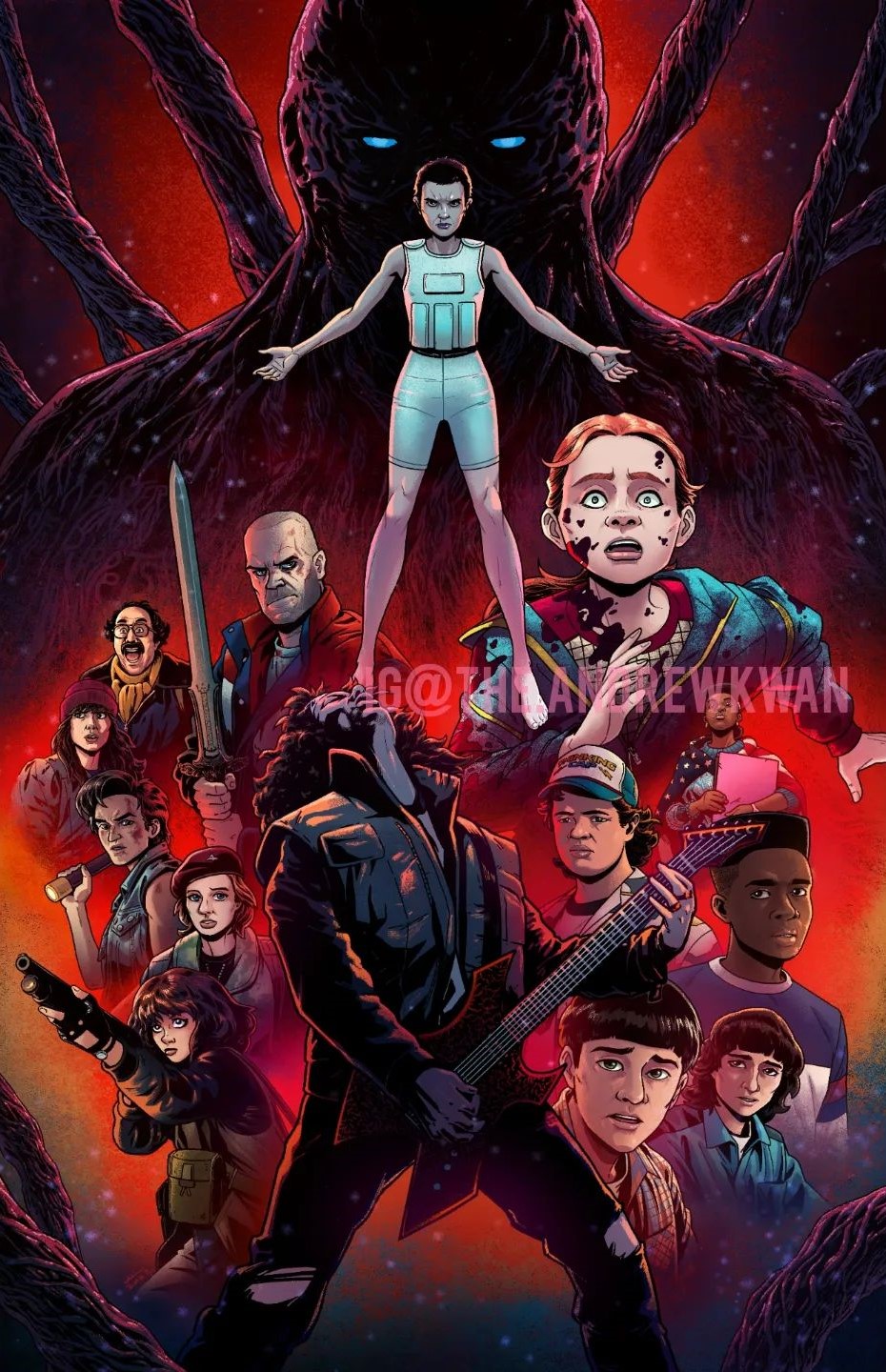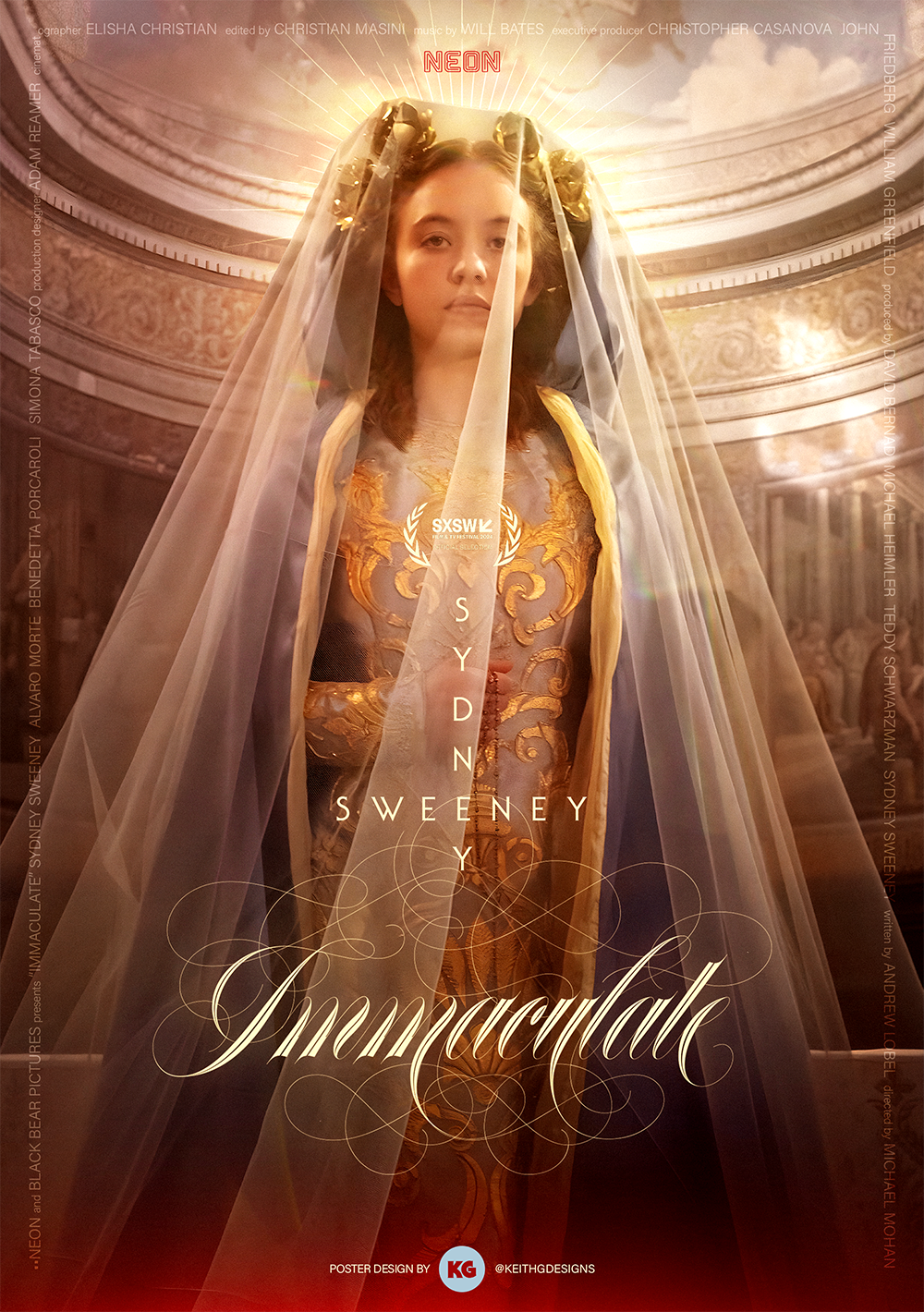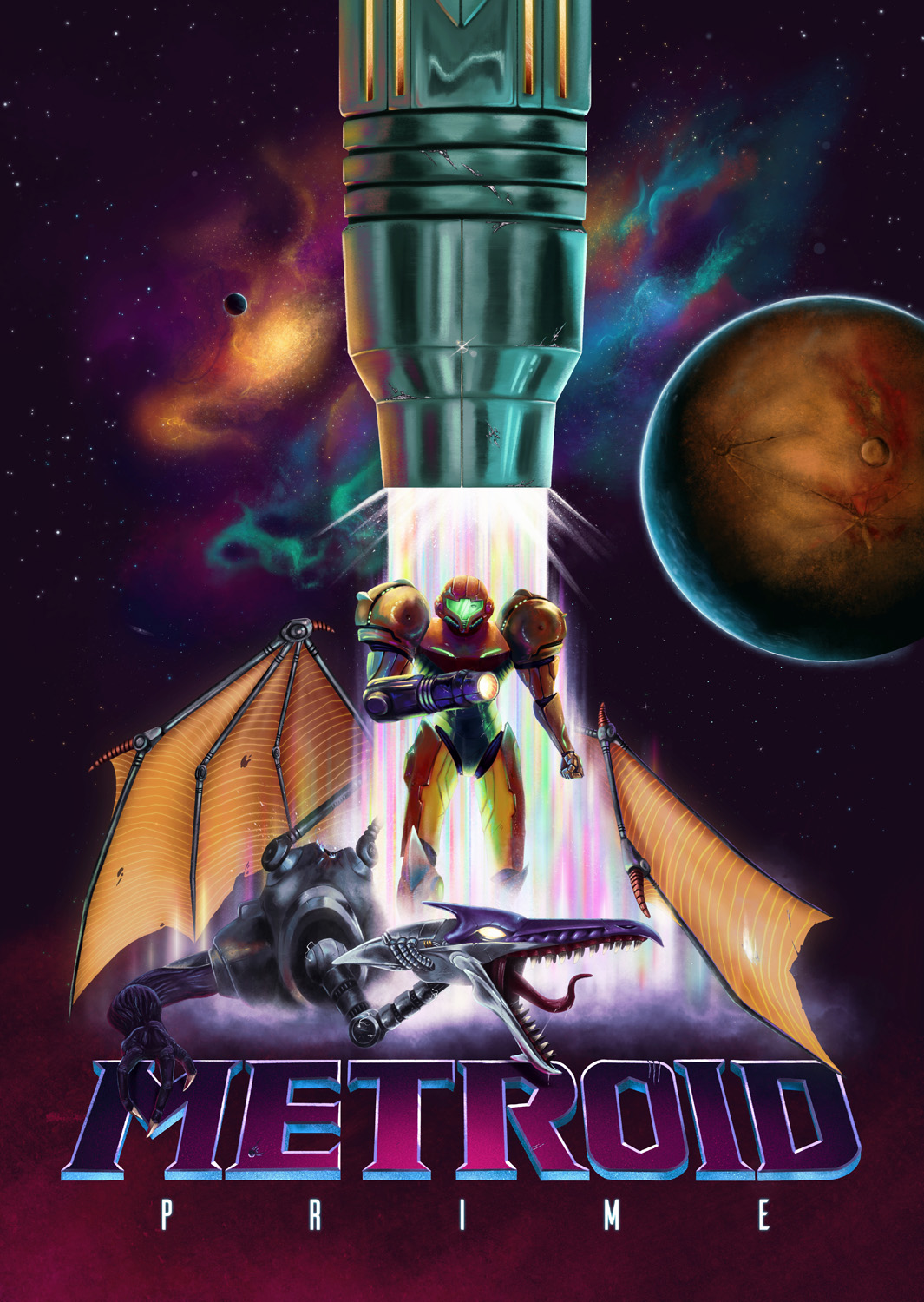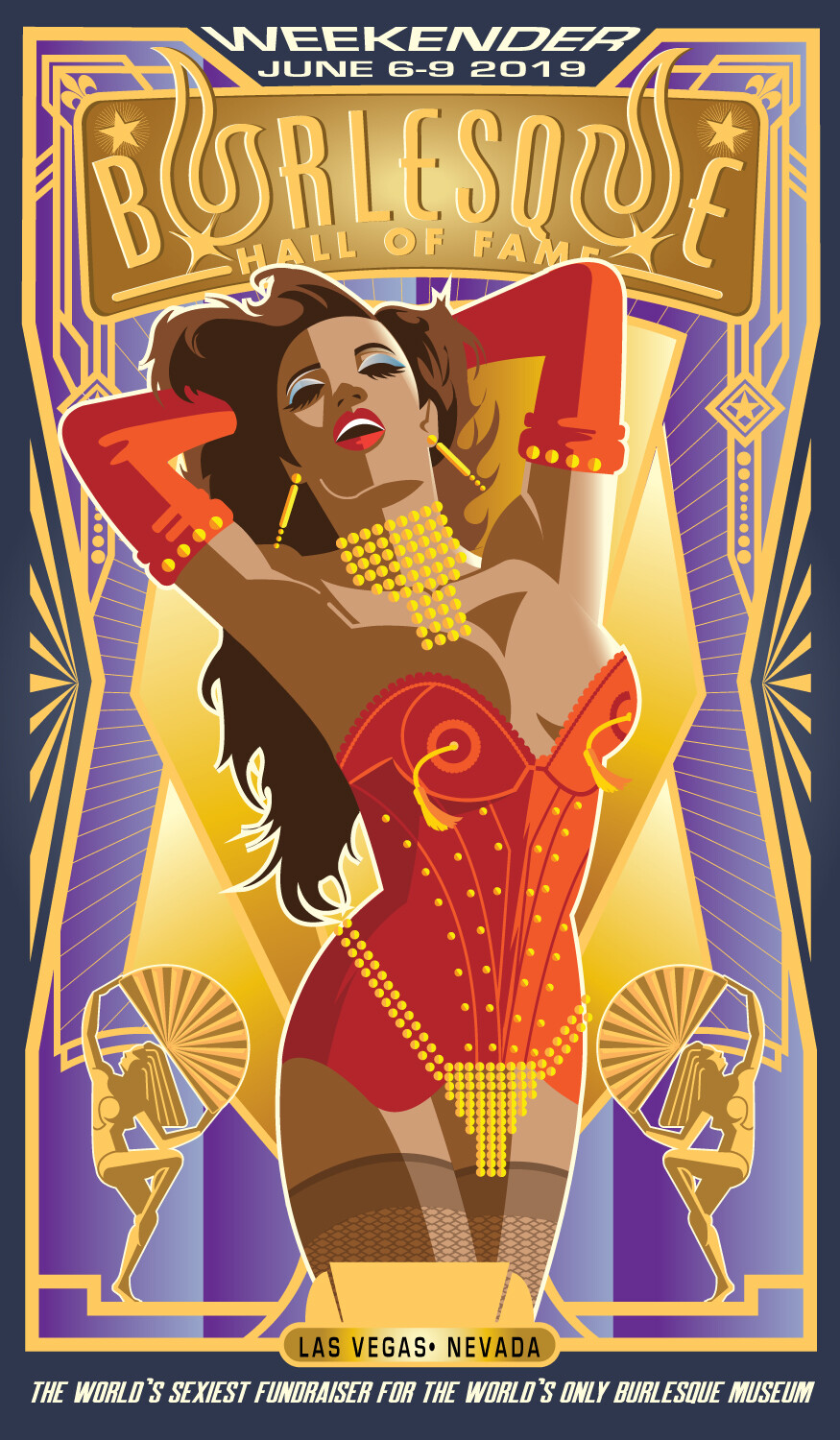David Blatt has been an illustrator for basically all of his life, he has dedicated countless hours to his craft and now he’s working on some amazing projects. Recently, he was hired by Naughty Dog to create the key art for The Last of Us Remake which releases in September. The artwork quickly circulated around the internet with fans praising David’s style and approach.
We thought this would be a great opportunity to ask David about his work and see what advice he may have for up-and-coming artists looking for their big break! If you’re not already, be sure to follow David on twitter.
First off, congratulations on the stunning artwork and this amazing opportunity! How did this gig for Naughty Dog come to be?
Thank you!!! I am a huge fan of the original The Last of Us from 2013, and after another release date shift for Part II I had this idea for something I’d never done before. What if I could share my love for the game through my art with like-minded people all over the world — physically, not just digitally? Raffling off a new original artwork every Friday until the game comes out! Without being driven by selfishness and thirst for glory, just to spread the love. From the community for the community.
The online giveaway event started on February 21, 2020 (the initially planned release date of The Last Of Us Part II) and ended with a worthy finale on May 29, 2020 (the planned release date at that time). In over three months 15 original The Last Of Us related sketchbook pages and 5 limited and signed prints were given away for free. Never delayed or skipped a day. A new chance to win on every “fanart Friday” at a random time on Twitter. When the art went online, all you had to do was look at the image, be “The First of Us” to give the correct answer to a question that couldn‘t be answered without seeing the artwork and leave a heart emoji under the tweet. The winner would be announced shortly after.
The thing blew up and within a few weeks, my follower count of roughly three thousand had doubled! On Fridays, a large group would gather in front of their screens for a chance to receive one of my original ink drawings. Among all the new followers were a lot of the Naughty Dog developers, including artists, writers, directors and producers, including Neil Druckmann (writer, director and co-president of Naughty Dog), who shortly hired me for a private commission.
I was involved in talks with him, other members of the studio, and people from SIE (Sony Interactive Entertainment) for a long time about how we could realize a collaboration — because they liked the quality of my work I guess, and also because they recognized how important this franchise and their work, in general, is to me personally.
After a long back and forth, I was finally allowed to sign an NDA and was told about the project Naughty Dog had planned for me.
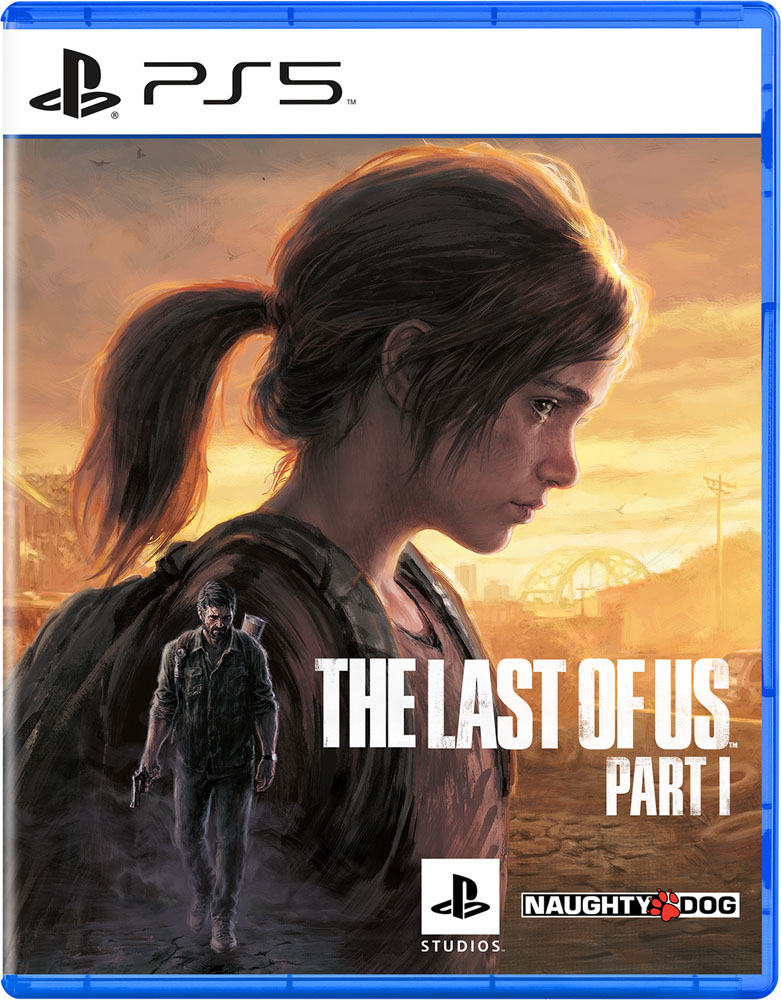
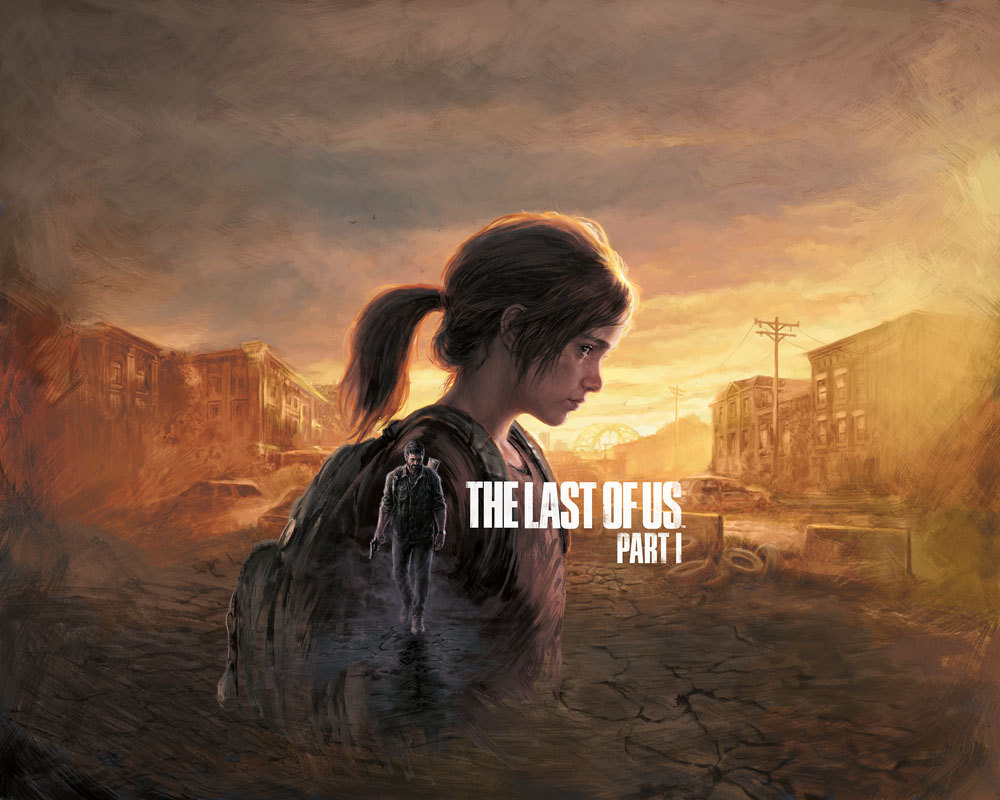
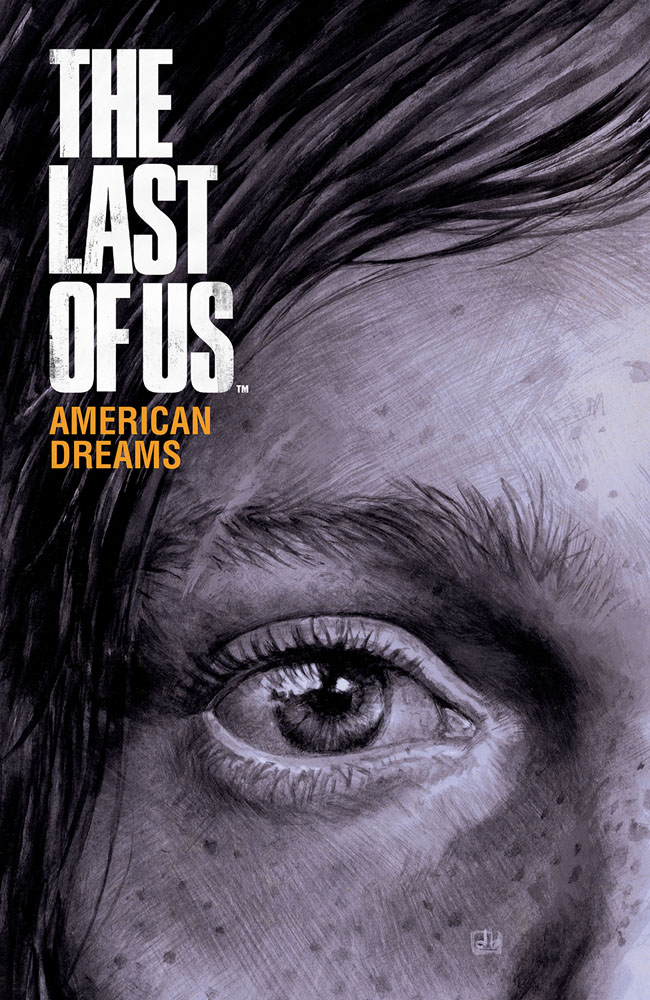
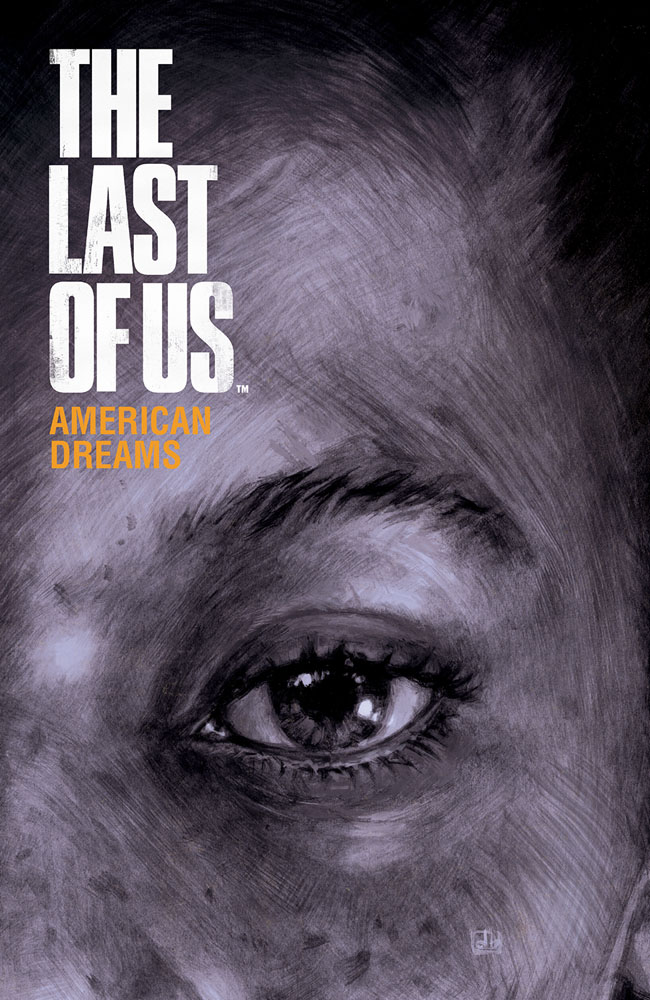
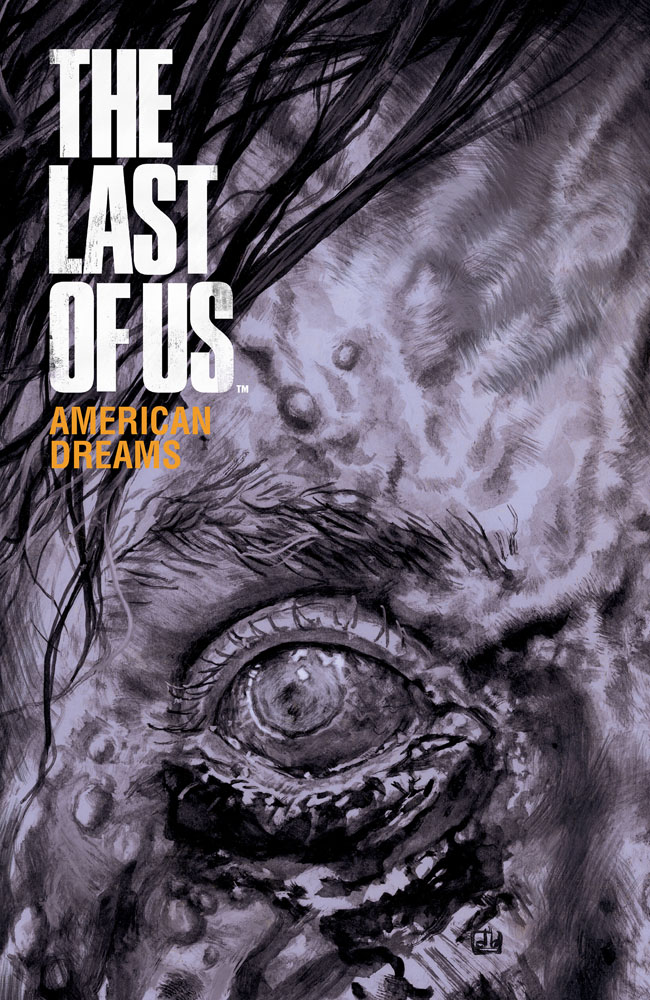
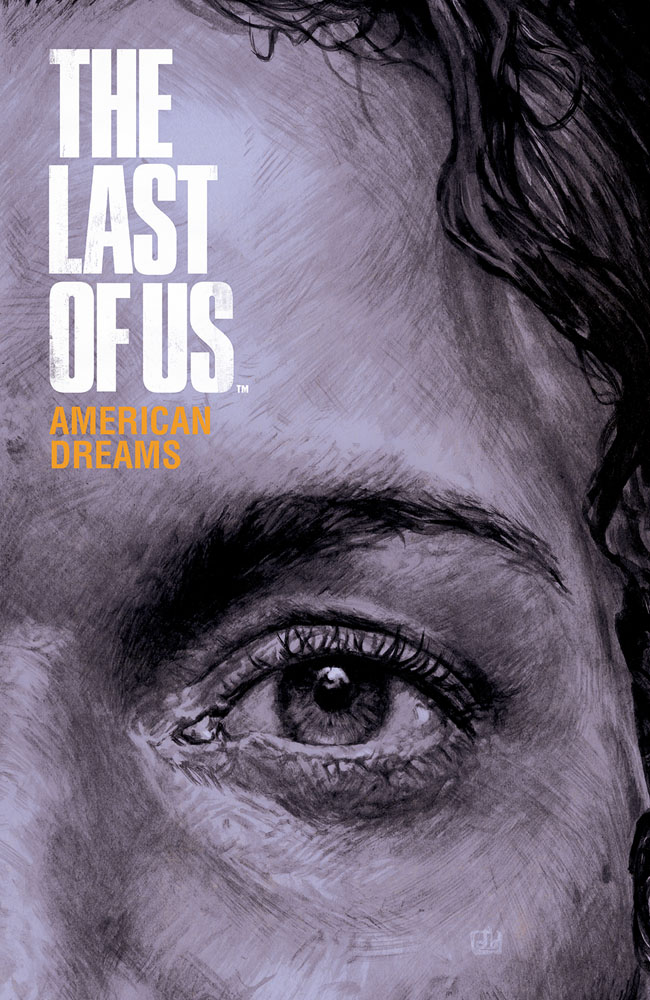
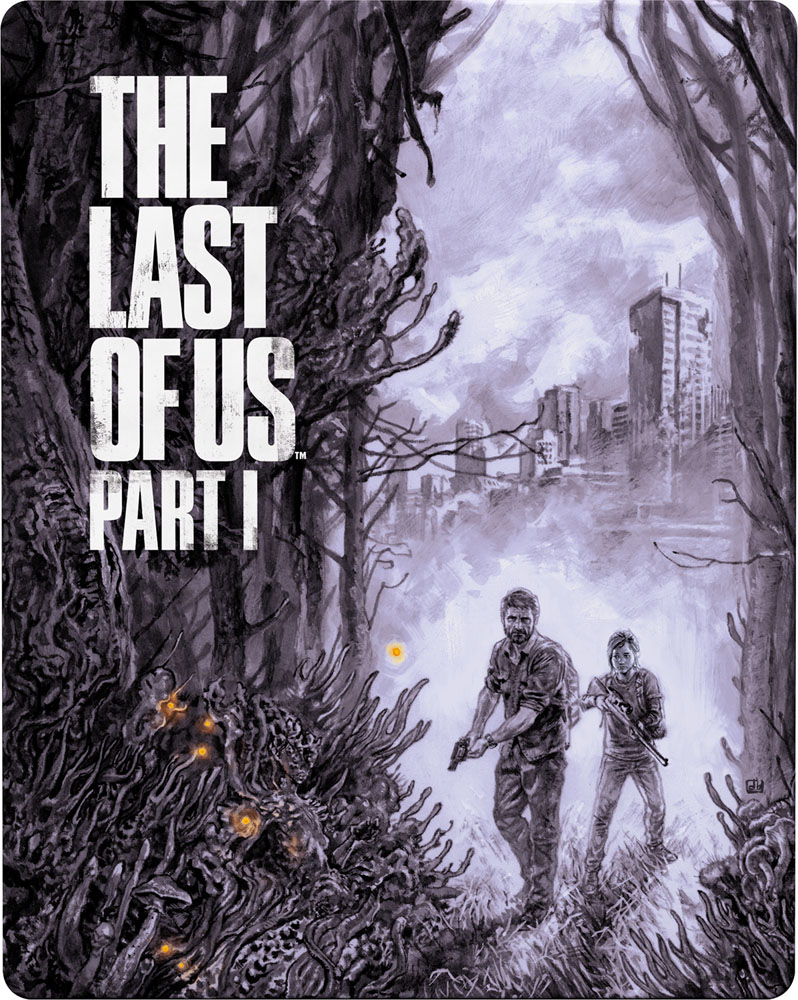
Could you tell us a little about yourself and your creative journey?
I was never particularly interested in any school subjects, sports, or other activities kids of my age engaged in. I finished comprehensive school with grades that made it hard for me to attend university, and I cancelled my registration at technical secondary school after 1-2 classes. Even though I lacked a clear goal in life back then, I kept on drawing all this time, never stopping since it was the only thing I always felt a passion for.
I tried to apply to university by taking an entrance exam (without meeting the qualifications). Certain German universities let you study even without any A levels if you score sufficiently on the tests. I did well enough, was accepted and worked as a freelance artist for almost seven years in the advertising industry while studying Communication Design to get my Bachelor of Arts.
I worked in an agency office and then from home. I created storyboards for promotional films, designed mascots, corporate identities, and so forth. Near the end of my studies, I realized that I wanted to change my field of work and interned in the video game industry, while also releasing a couple of small comics and thus connecting with many great and lovely people from the comic industry.
I got my BA and started working as a full-time concept artist in the video game industry. I have been at the same studio for over 7 years now and actually can’t believe how time flies. I still do some freelance jobs and private commissions from time to time, and a lot of fan and personal art in my spare time.
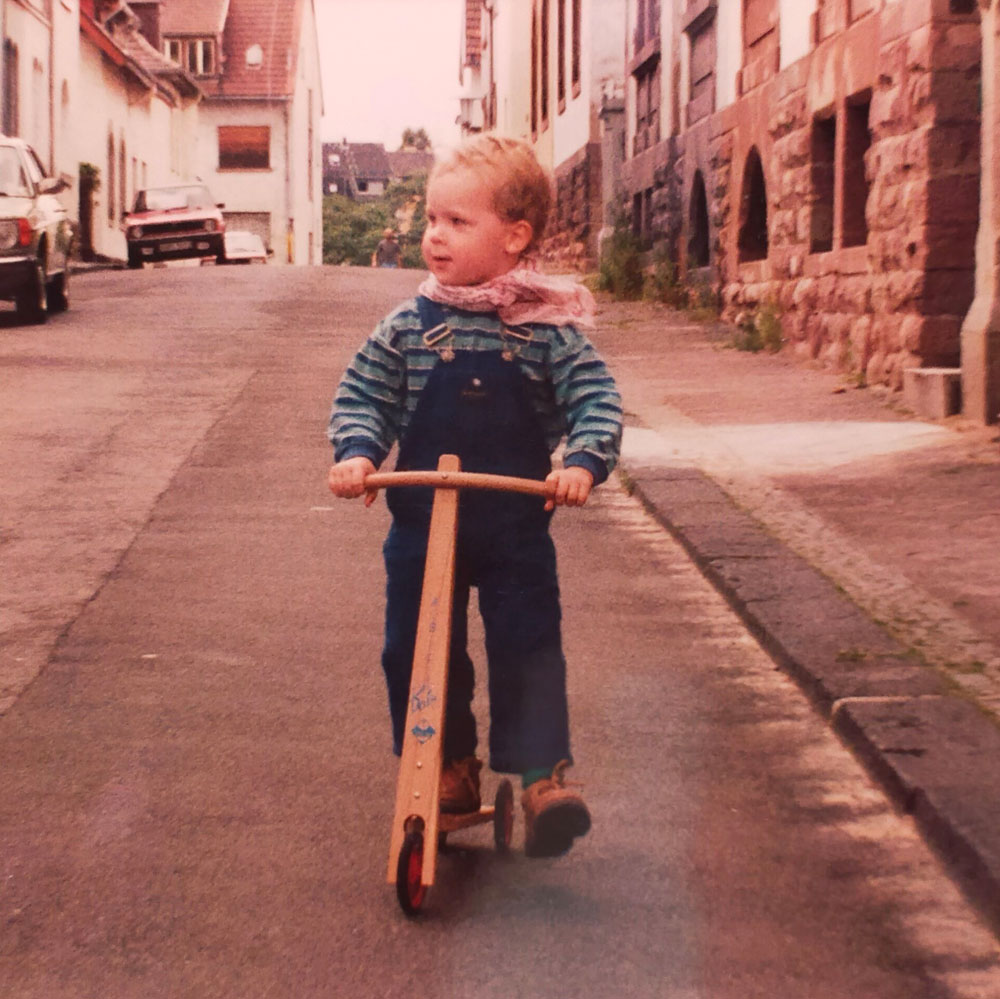
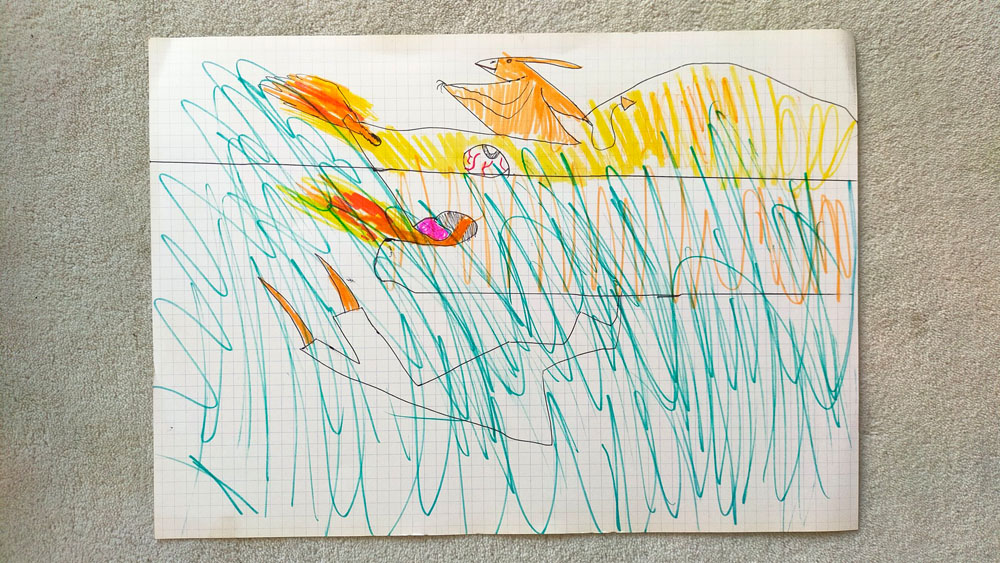
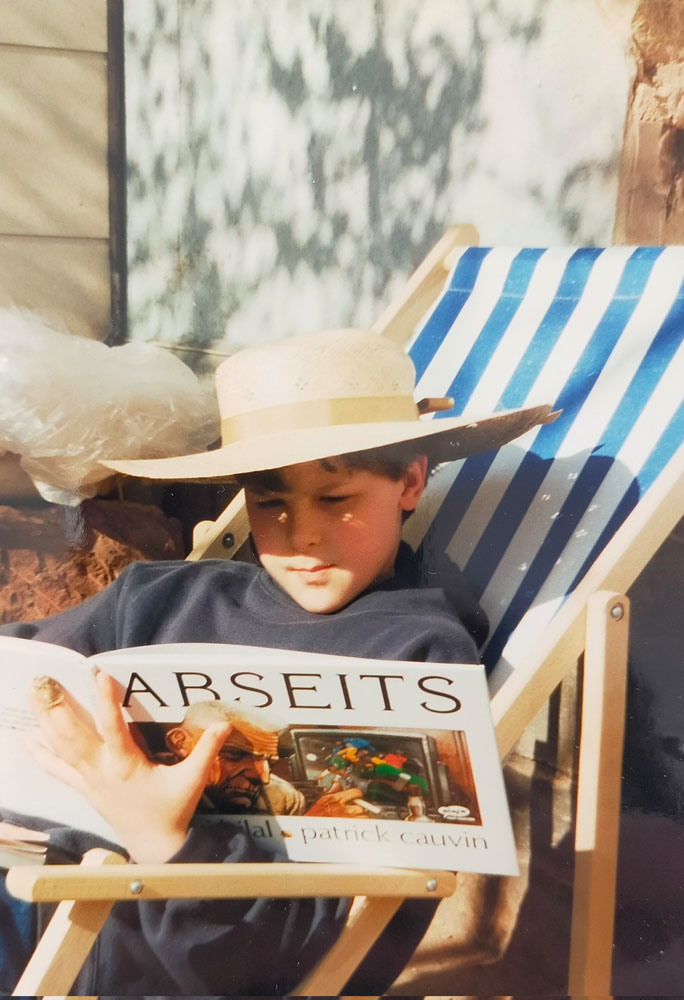
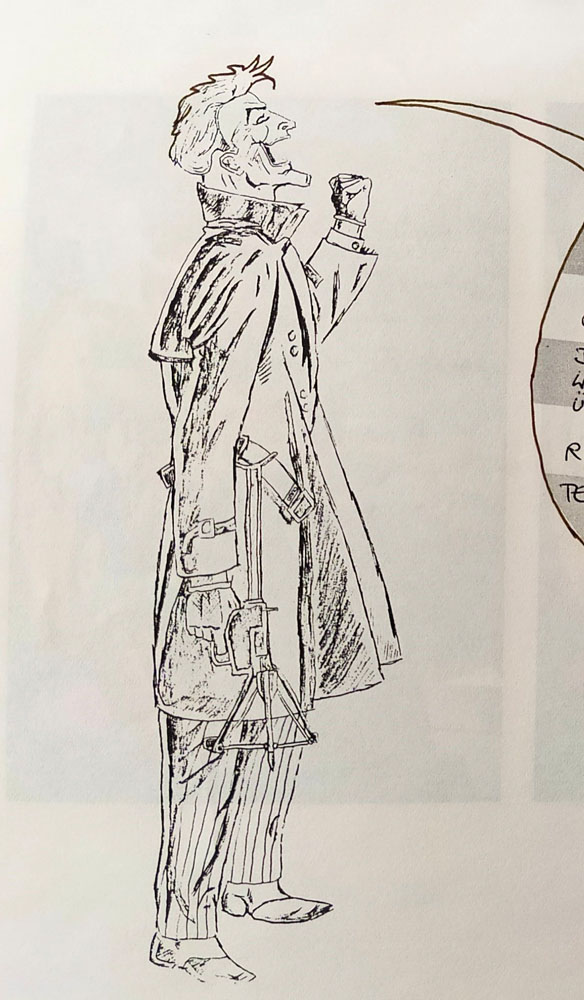
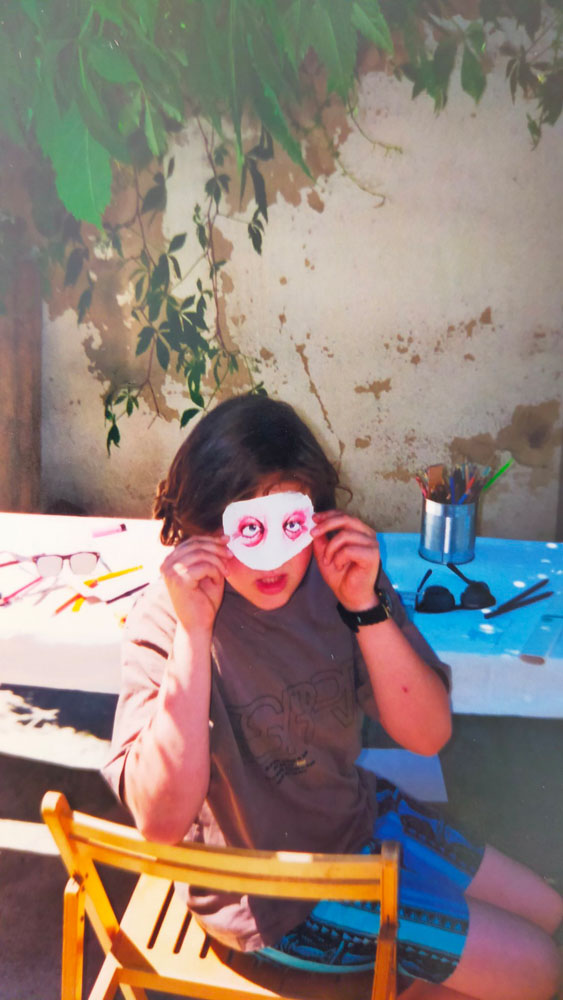
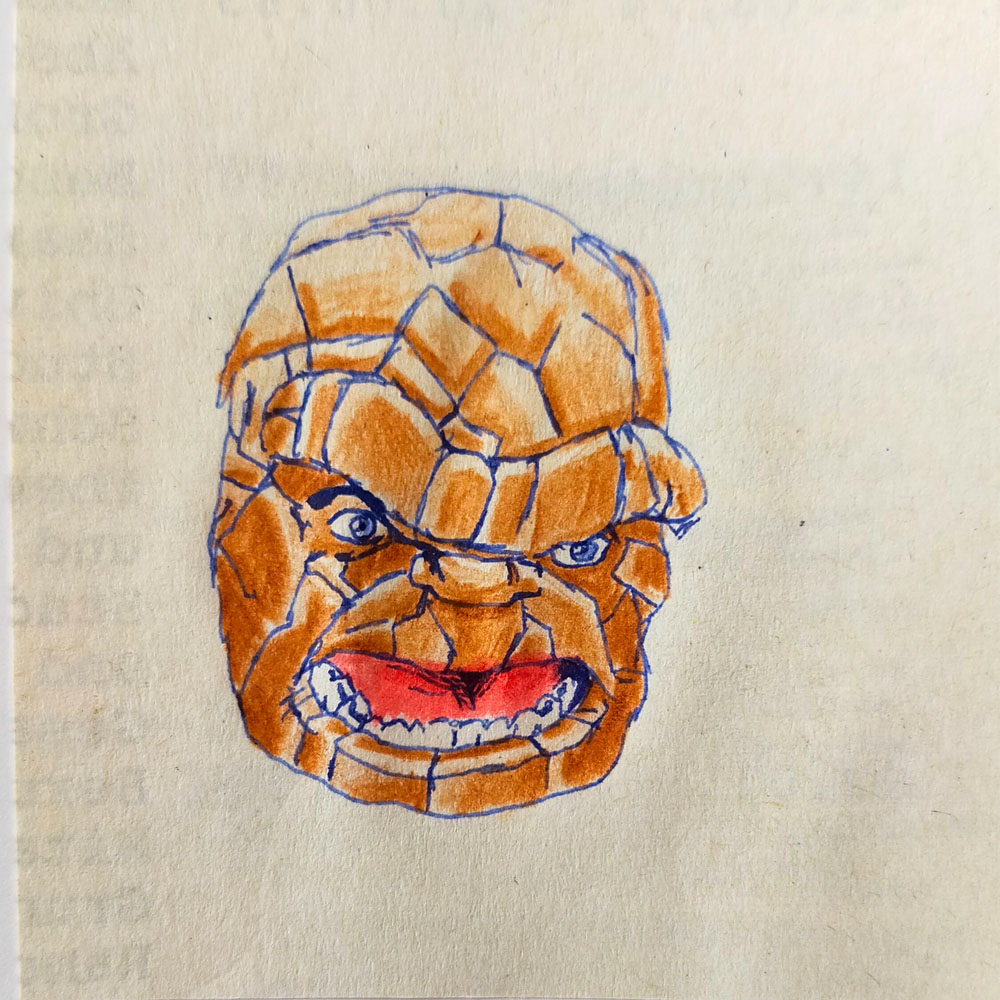
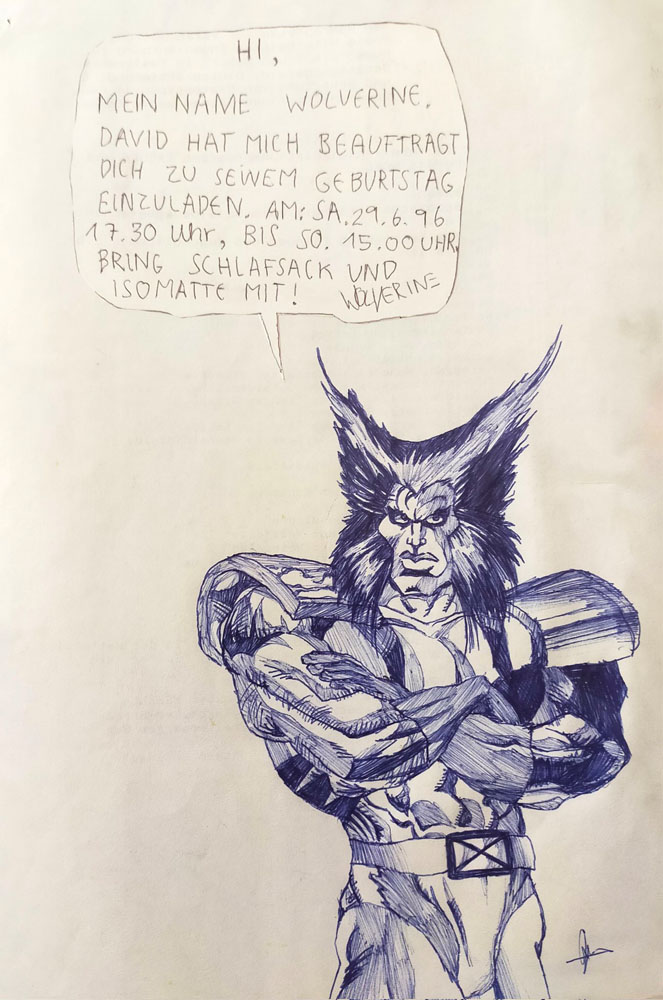
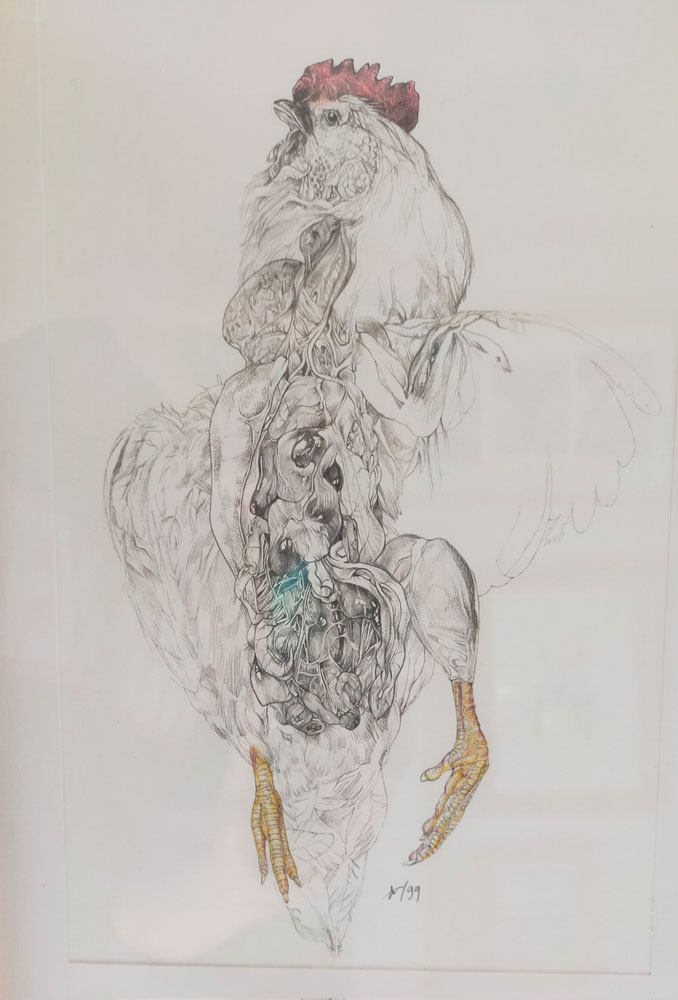
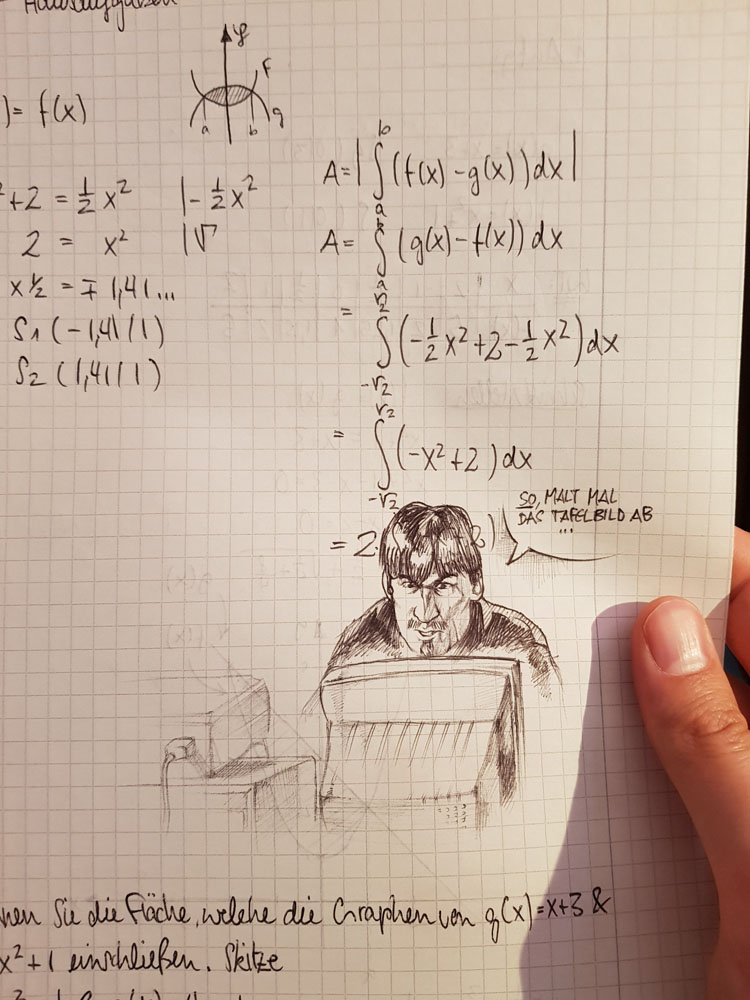
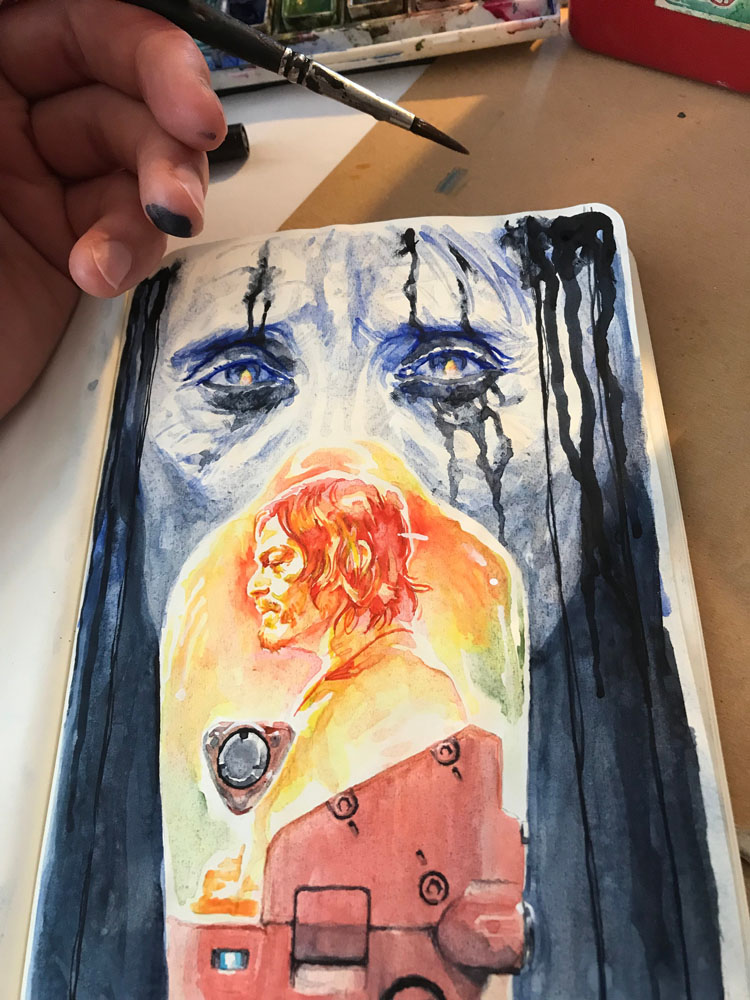
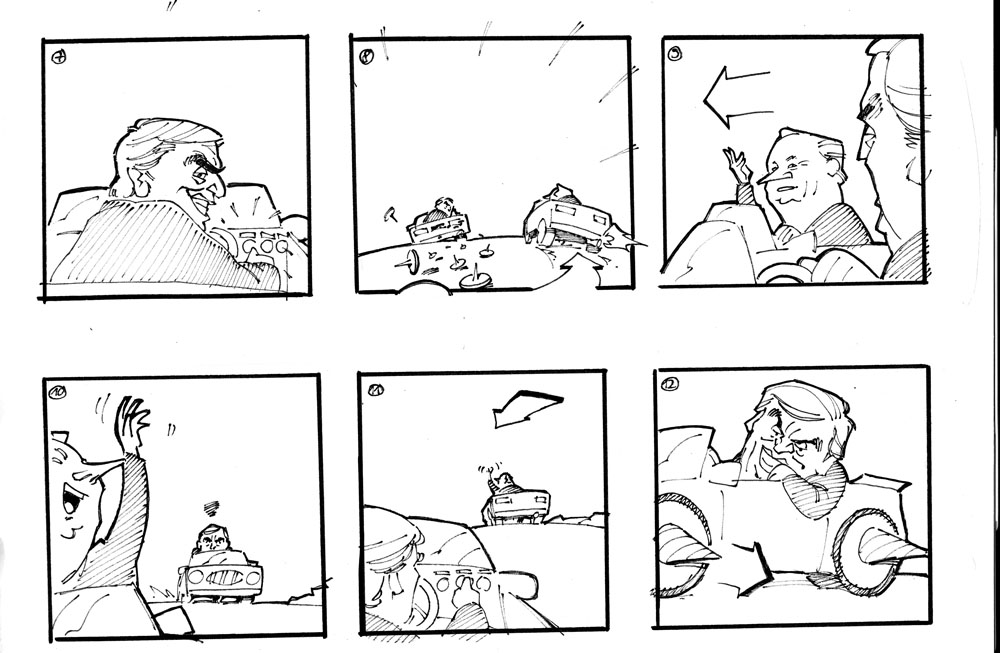
What are some of your favourite projects you’ve done over the years?
One day in 2009 I bought myself an iPod Touch. I loved painting on it with my left forefinger, using the apps “Jackson Pollock” and “Brushes”. I simply couldn’t stop and also got some publications back then through a small community I got into. Time flies! The first versions of @brushesapp had no layers, but a great time-lapse feature. I loved the diversion compared to Photoshop and what I was used to doing day-to-day. That small screen in your hands getting really warm after a while and your fingertip doing all the work instead of a pen felt really unique. It was a relief to have no option to create layer after layer. A weird analog-digital-hybrid-thingy. Really addicting back then and I got used to it quickly.
To be honest, I liked it more than using my Wacom. At one point I found out about an app called Jackson Pollock and started experimenting with it. I would start in the Pollock app, save the image and open it in brushes to finish it. I then began to lose interest in Brushes more and more with every update (more brushes, layer option, effects…) — what started as a fine little tool with a small community got bigger and more like Photoshop, which I did not like.
I found that old iPod a few years ago, the screen is cracked and like I said I’ve no interest in going back to the apps. But it’s still fascinating to me that I worked for hours on that little screen with my fingertip. Here’s the group we used to post in: https://flickr.com/groups/brushes
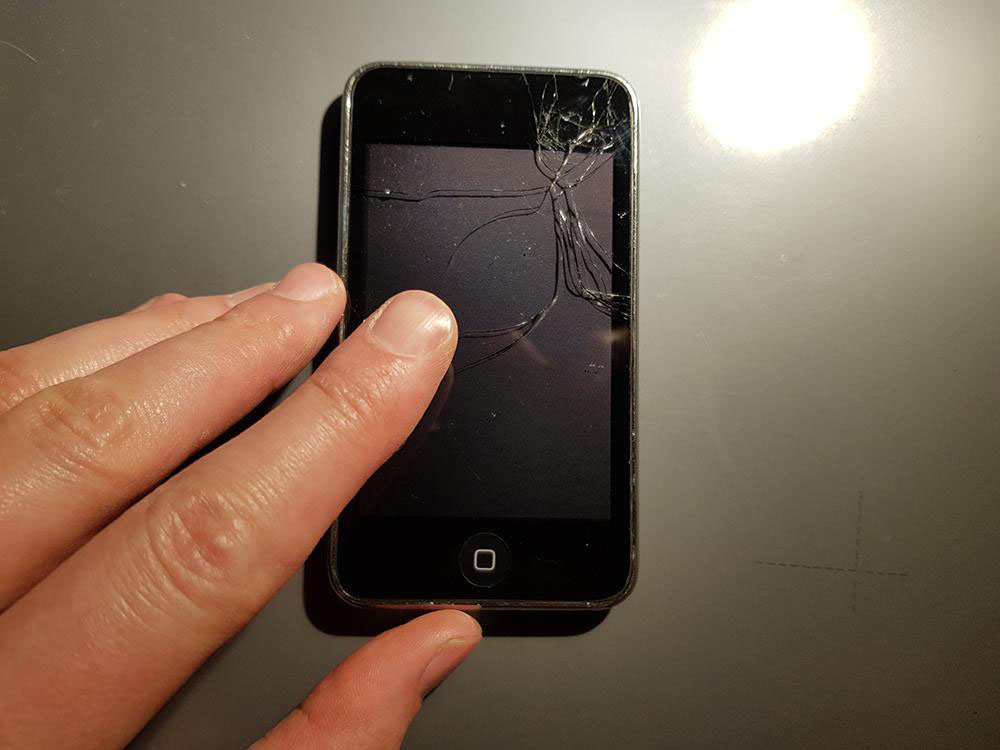
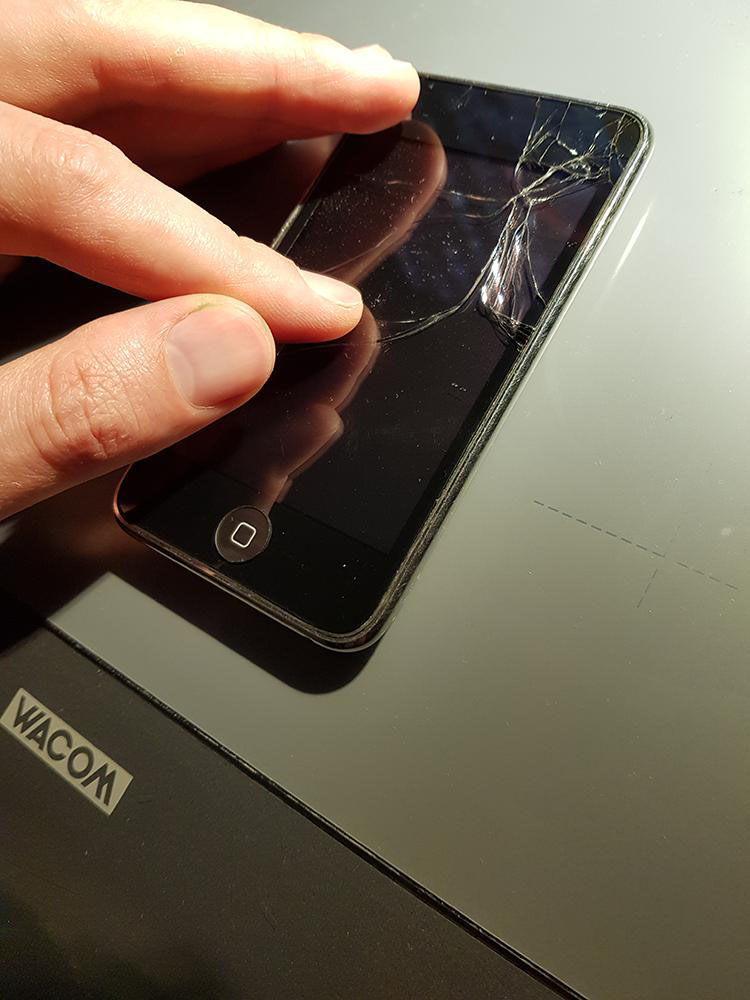
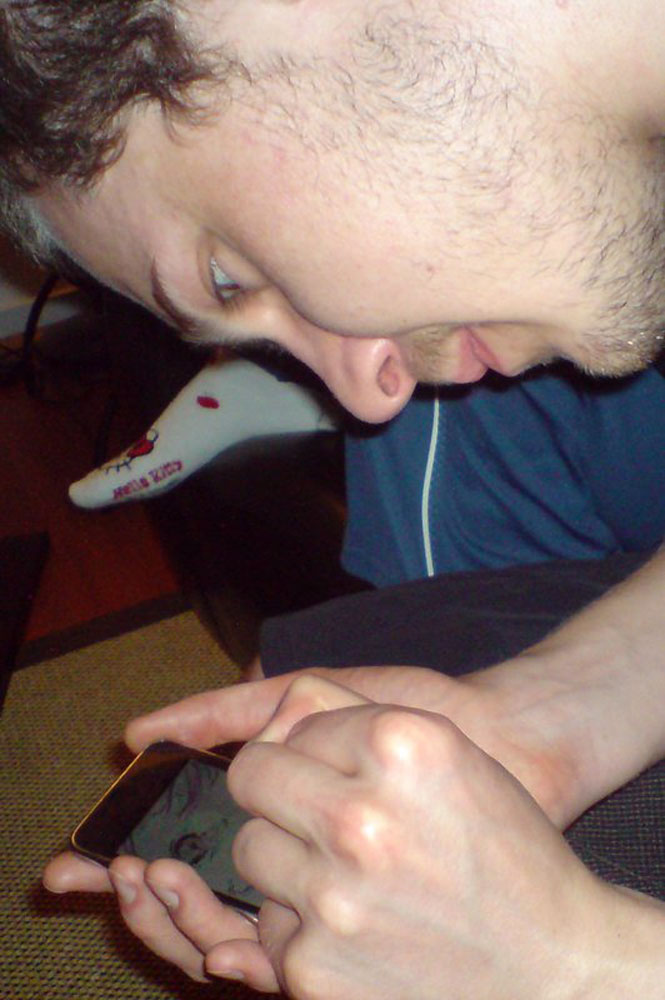

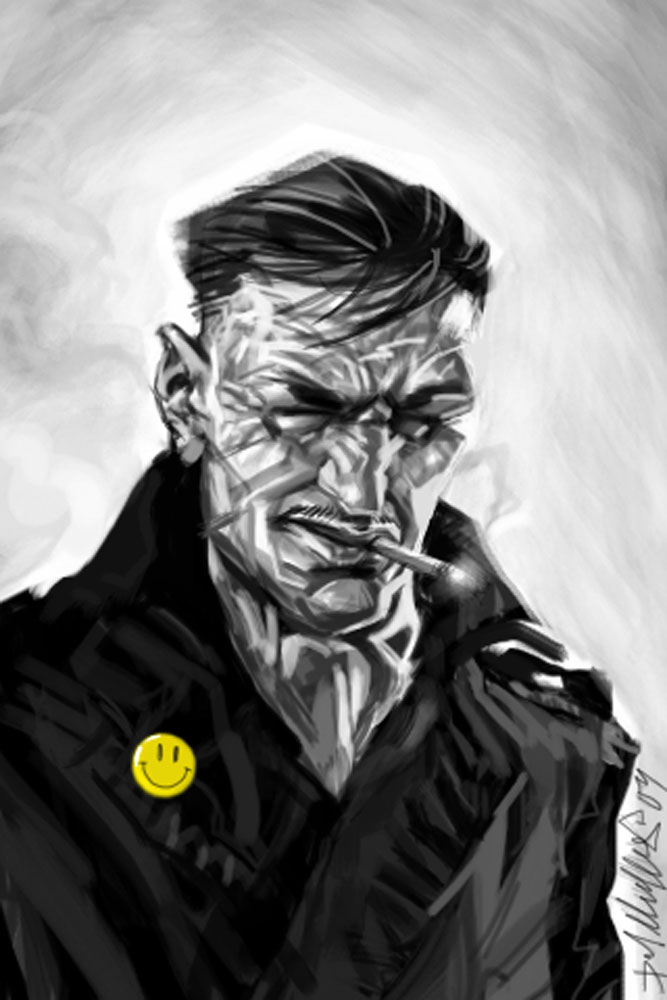
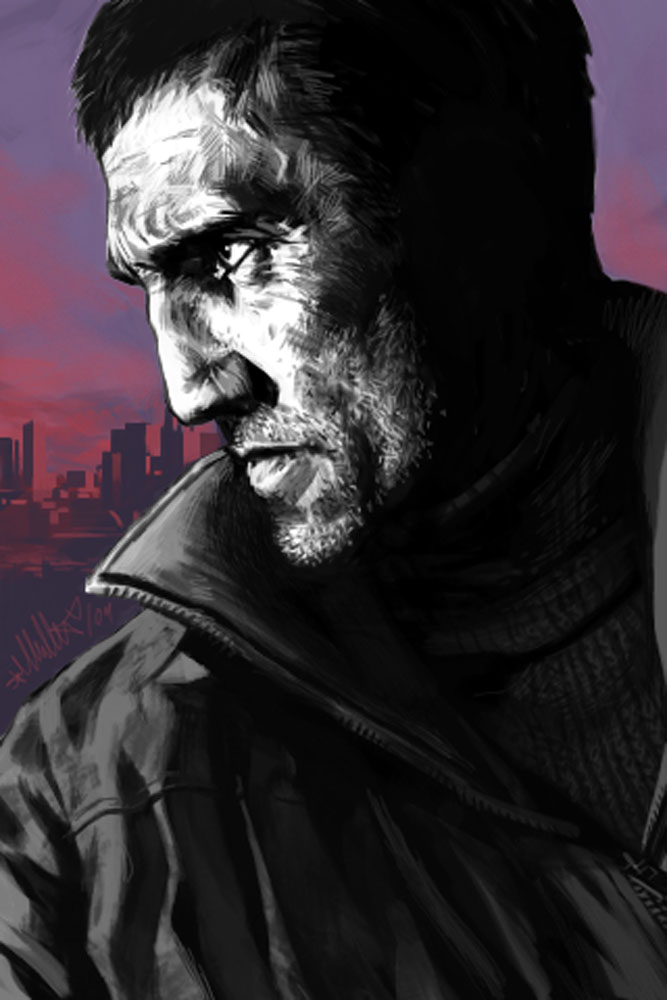
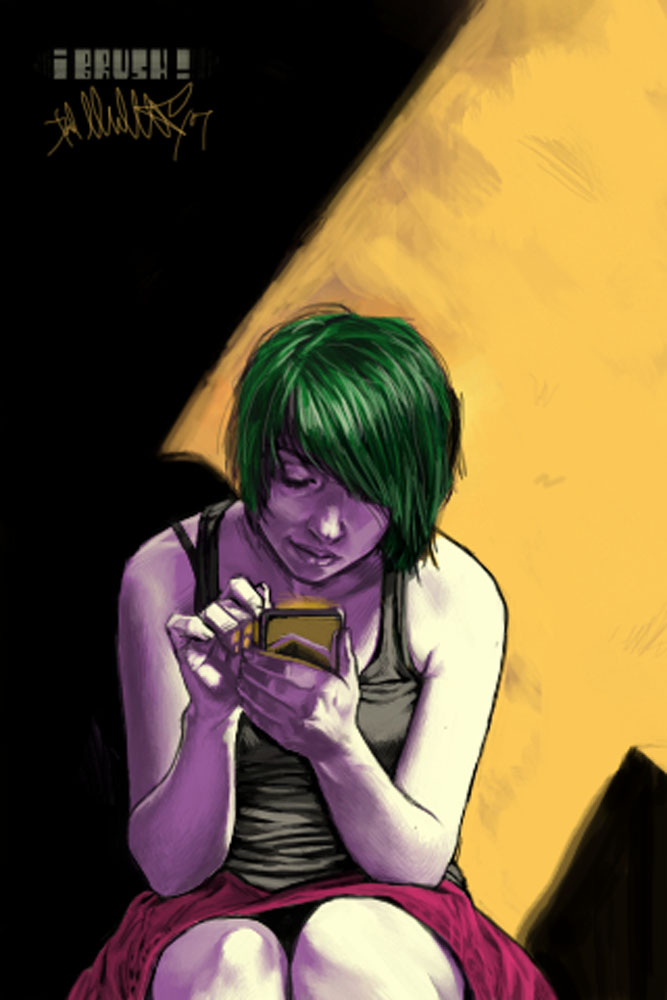
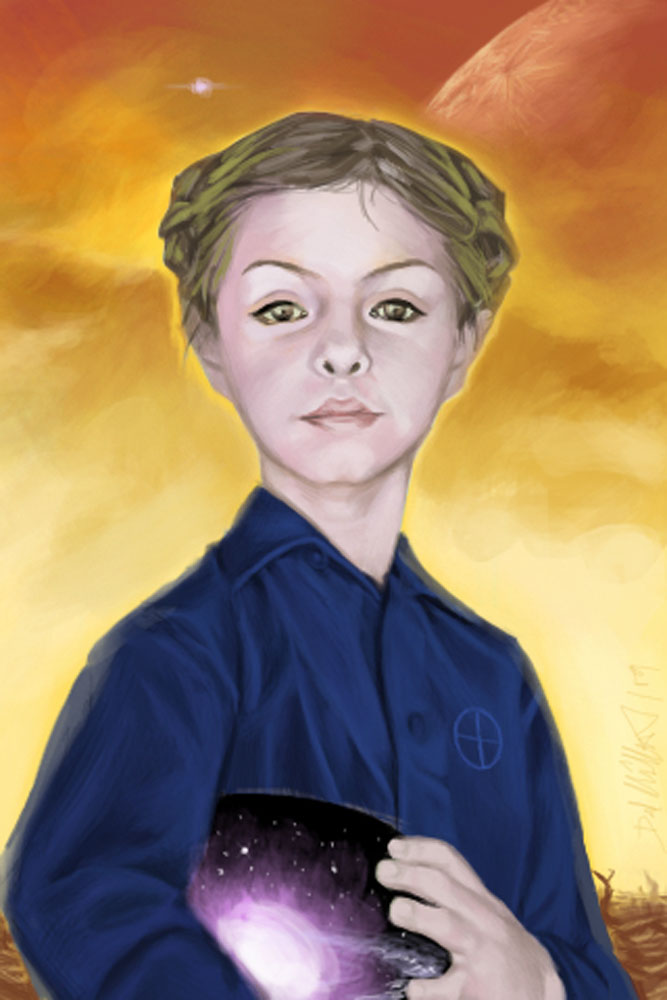
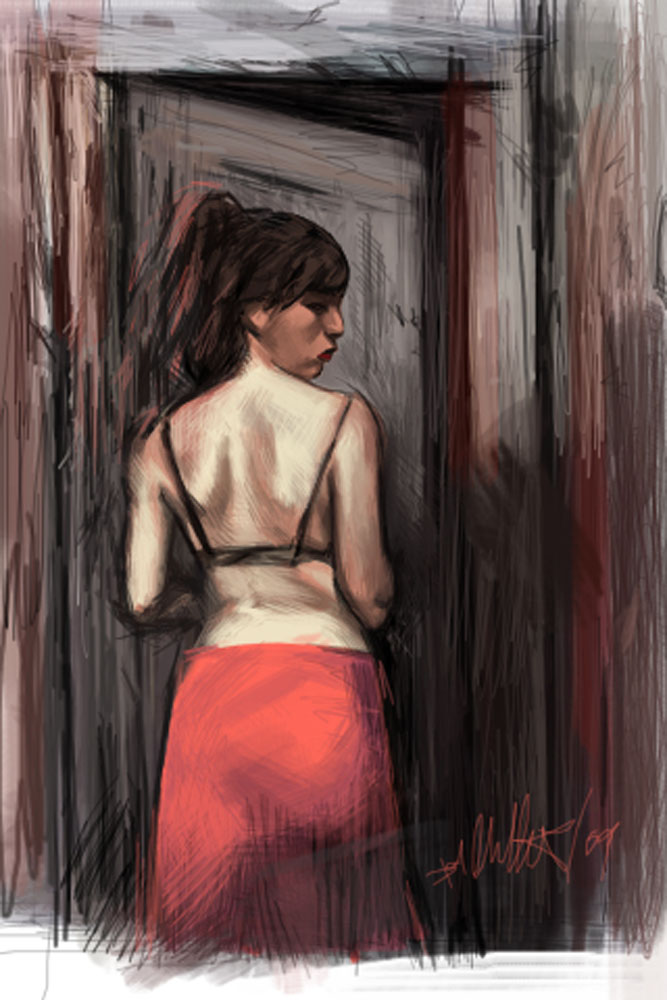
The smaller comic publications during my student days are really special for me, because for the first time in my life I was able to talk to publishers and allowed to work with people from the comic scene who welcomed me so warmly. I did pin-up pages for “JAZAM!” in 2009, an independent german comics anthology, a cover for the 2012 issue for “Comicgate”, an independent comic magazine and my comic debut for the same magazine in 2014 called Gefallen. That was very cool and a nice time that I will never forget.
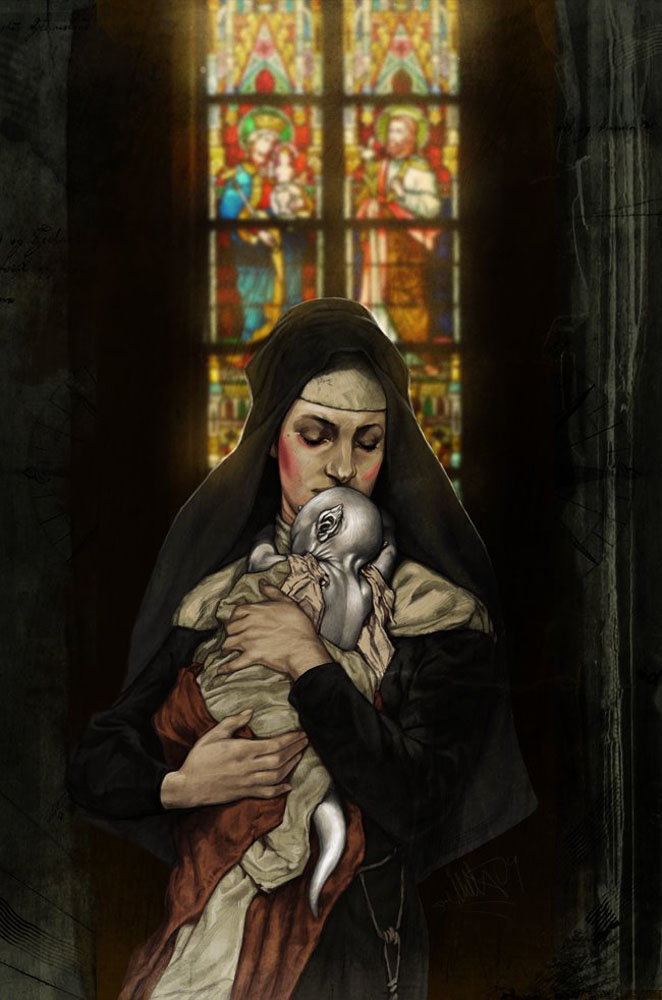
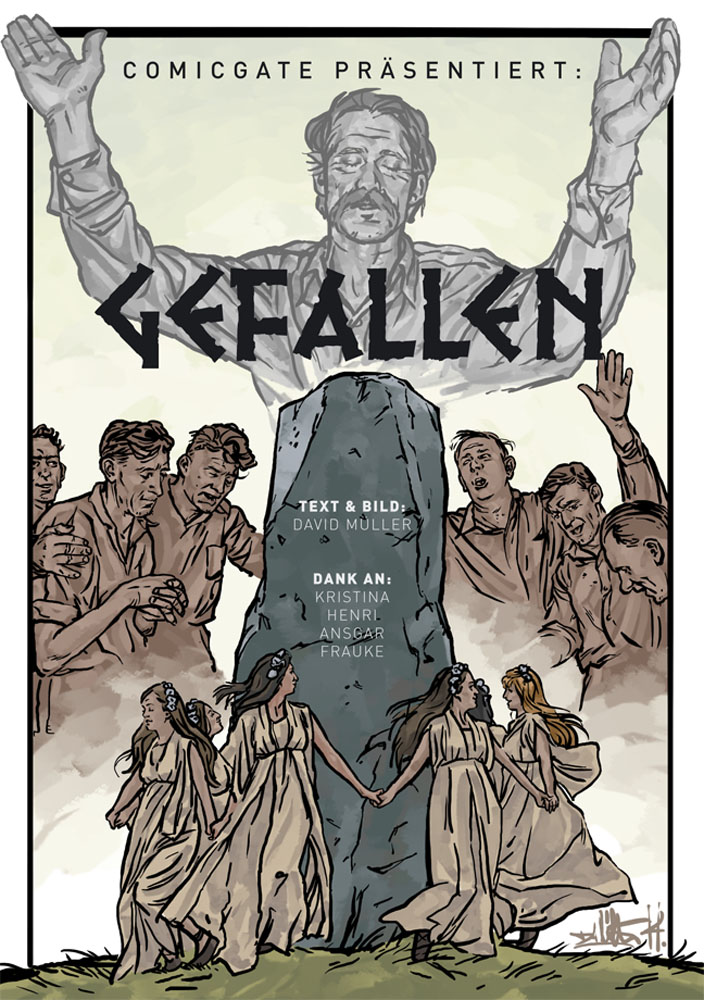
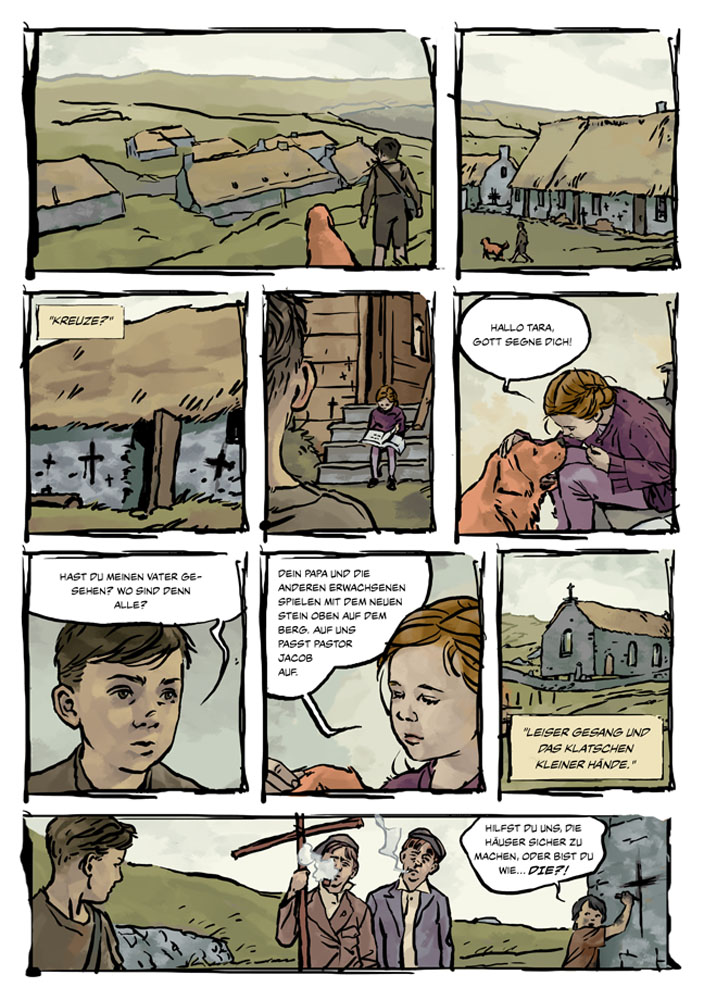
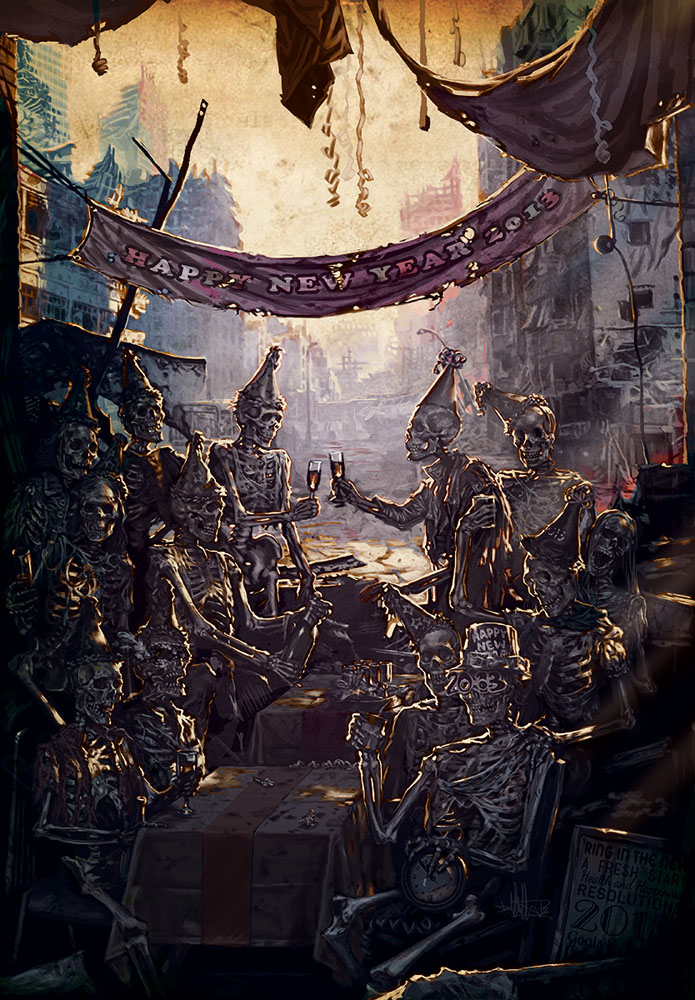
To stay in the world of comics, being able to illustrate a pin-up for the Spider-verse comic series for Marvel (2019-2020), in which I had the chance to present my personal Spidersona (“Spider-Spy”) was also huge! The fact that my name was printed on the same page as the names Steve Ditko, Stan Lee and Dave Rapoza is still mind blowing to me.
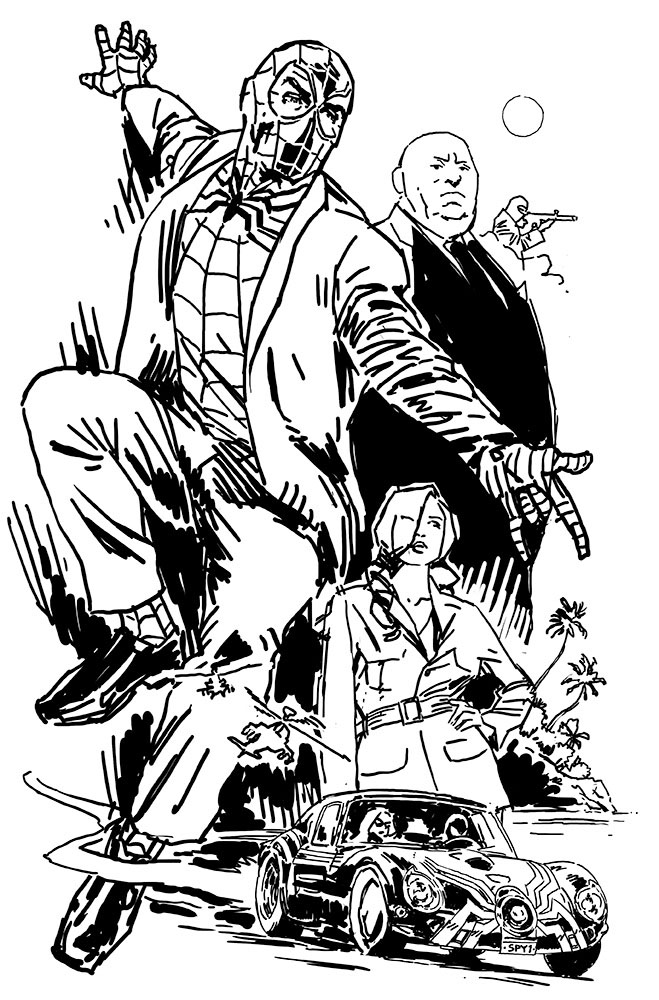
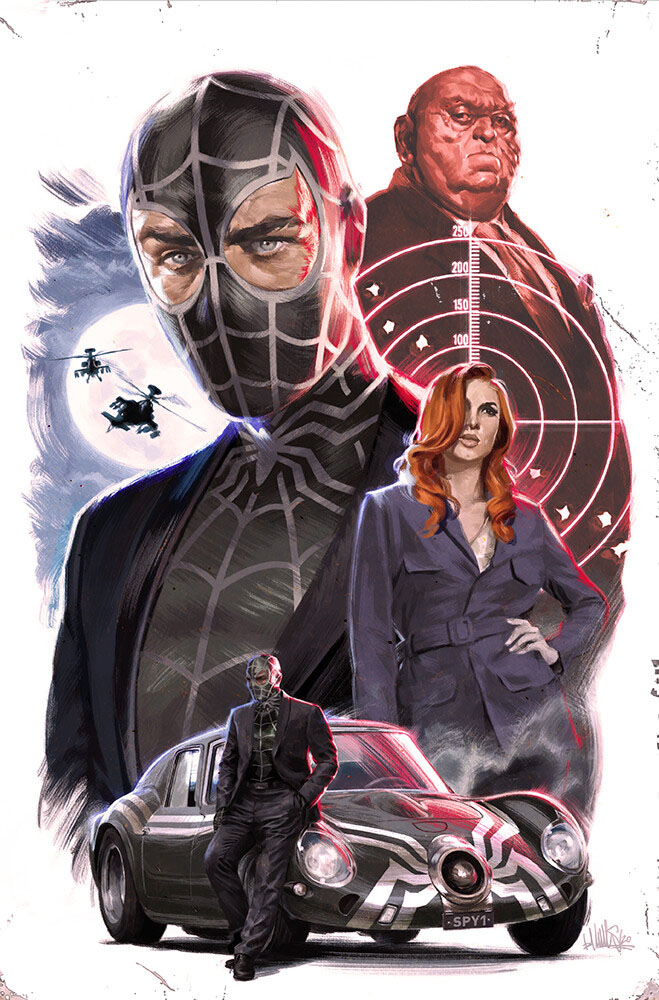
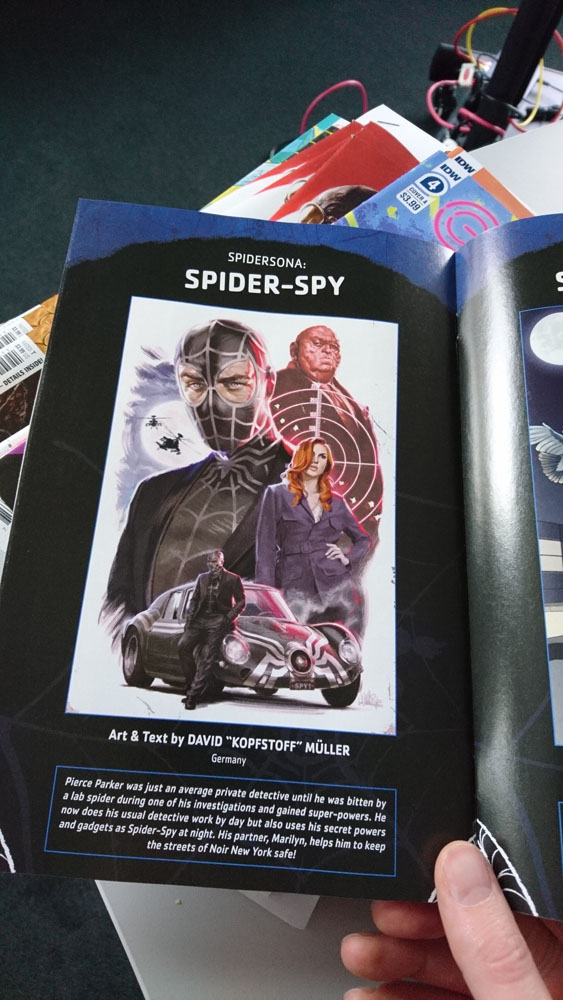
Another highlight, the variant cover that I was allowed to illustrate for Marvel the following year in 2021. A real dream come true here, even tho I’m sure not many people will know about the series (HEROES REBORN SQUADRON SAVAGE #1), most of you probably know the Punisher and Elektra, and they’re both on it. I’m mighty proud of that!
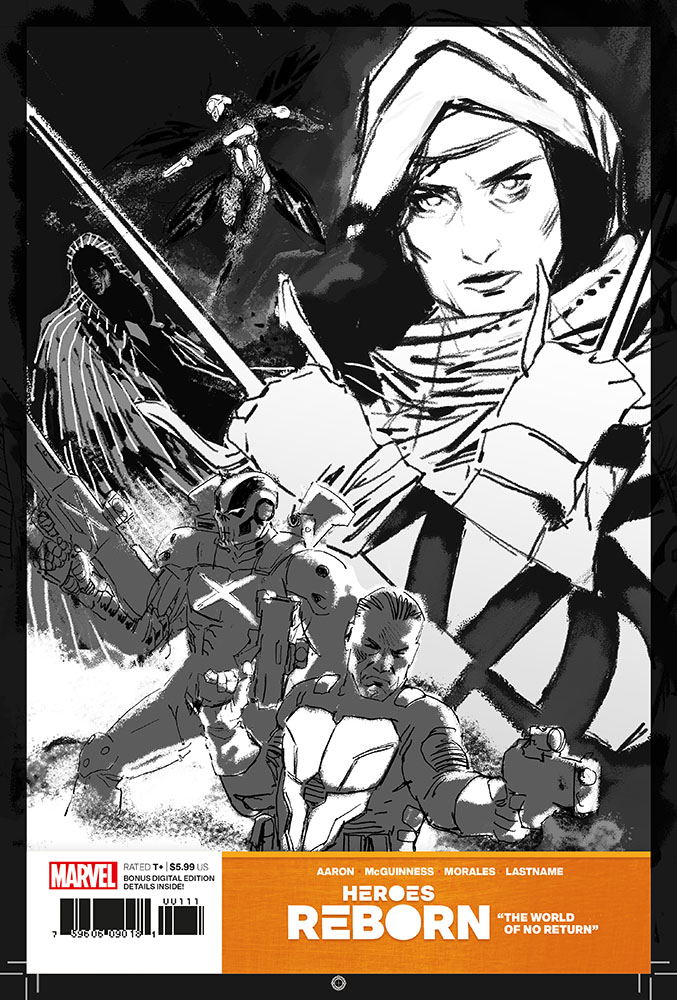
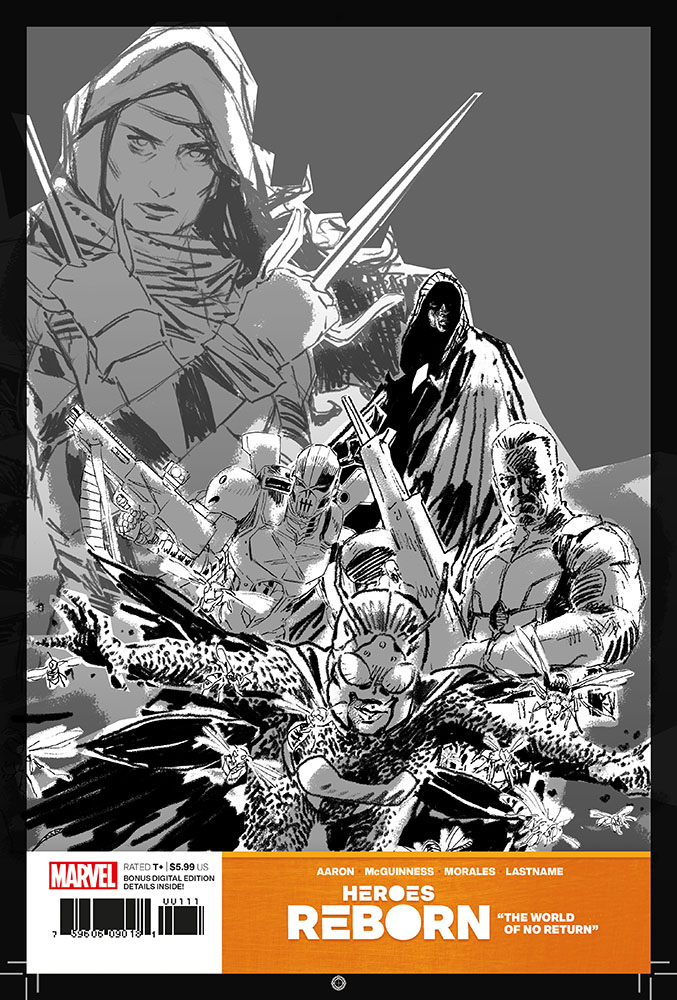
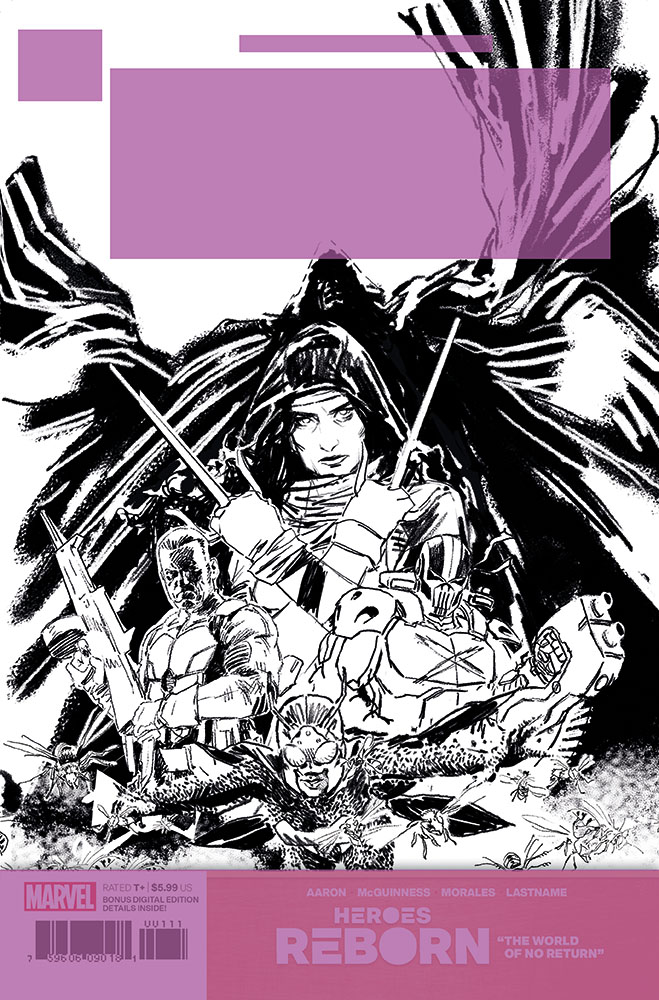
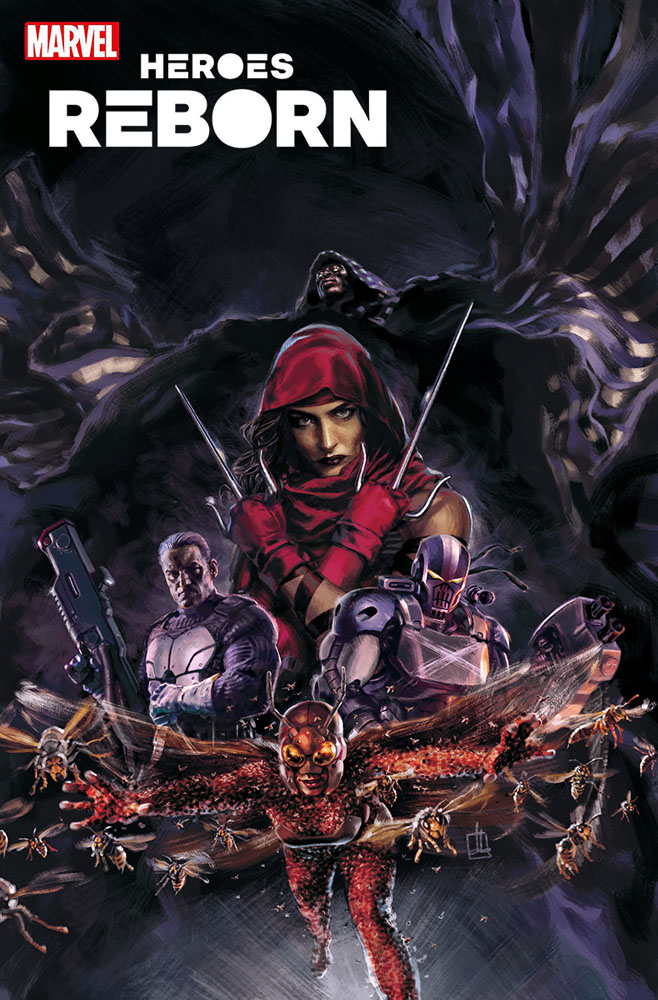
#TheFirstofUs. I’d done smaller series before that I was proud of, but never something of this magnitude and selfless devotion. I’ve never grown artistically like I did here on another project. Never before have I questioned and relearned myself in relation to my art in such a way. I have never put so much time and work into a personal project nor did I give my art away to strangers for free over such a long period of time. Never before had a project grown so much. Never did it help to connect myself with so many kind and likeminded humans all over the world, people with the same passion for one franchise/brand/world. It’s still unbelievable to me that this community event ended up becoming not one, but two artbooks with the 1st softcover one selling out in under 1 minute and the 2nd one reaching its pre-order funding goal in just one week. Probably the biggest thing I did to date? Definitely #The First Of Us, yes.
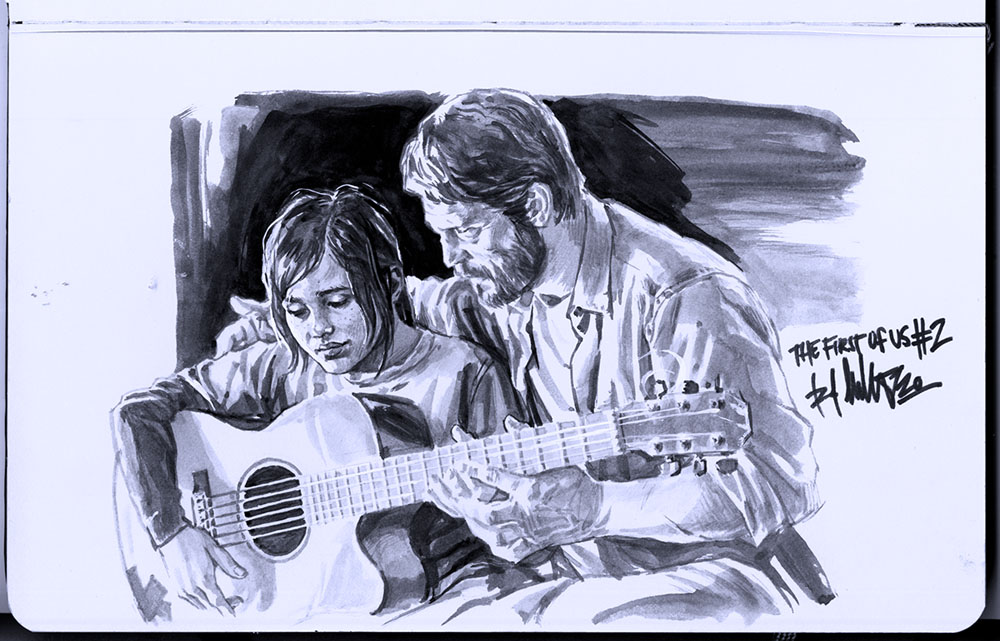
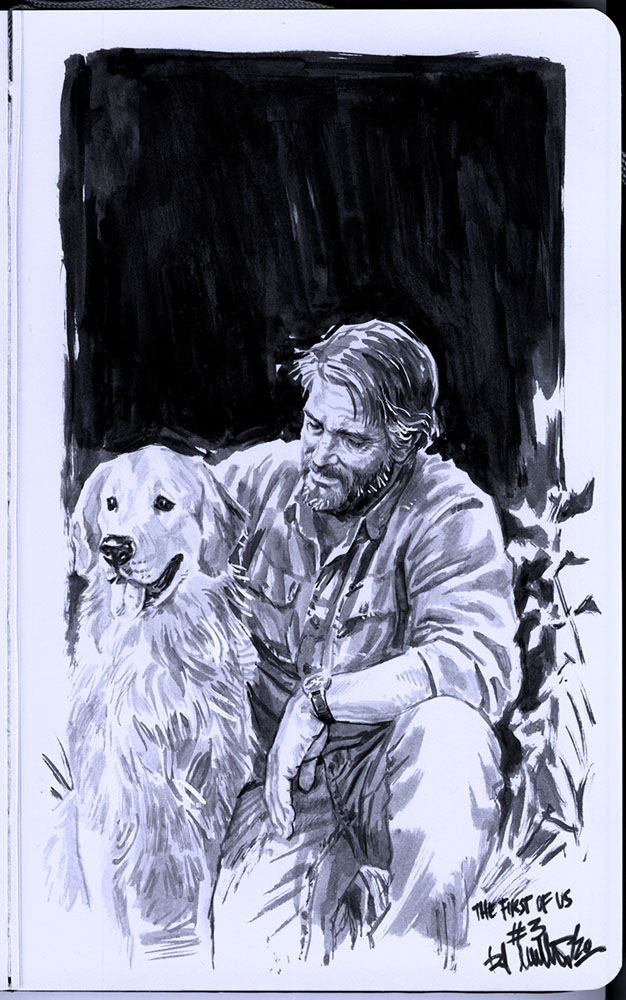
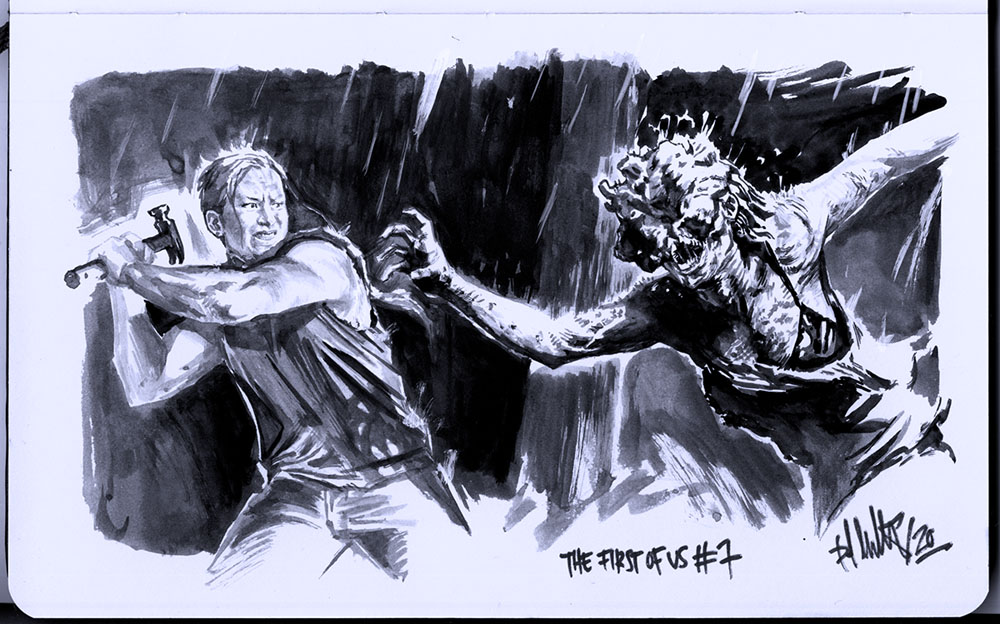
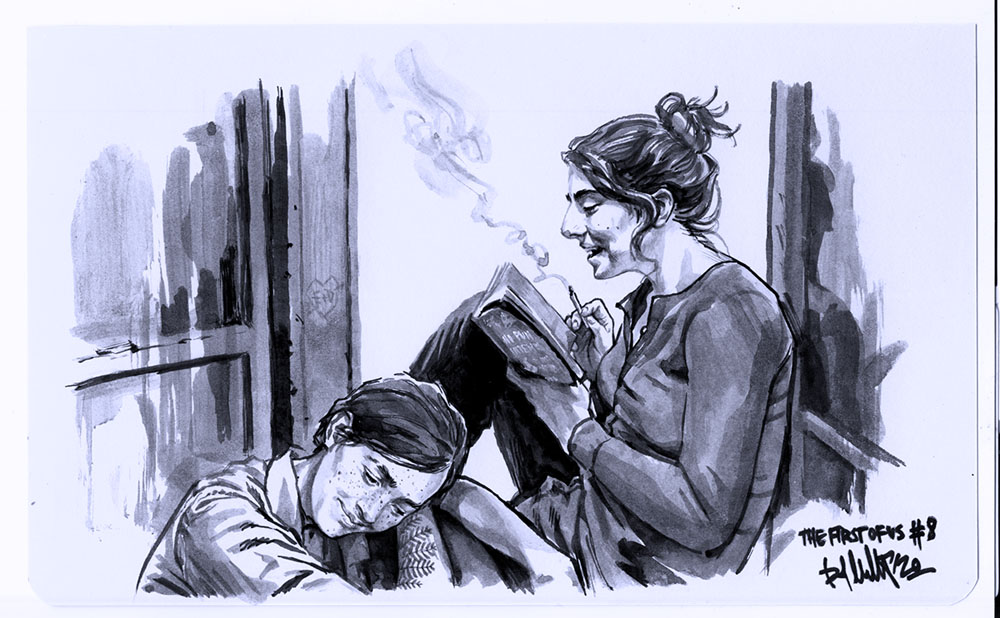
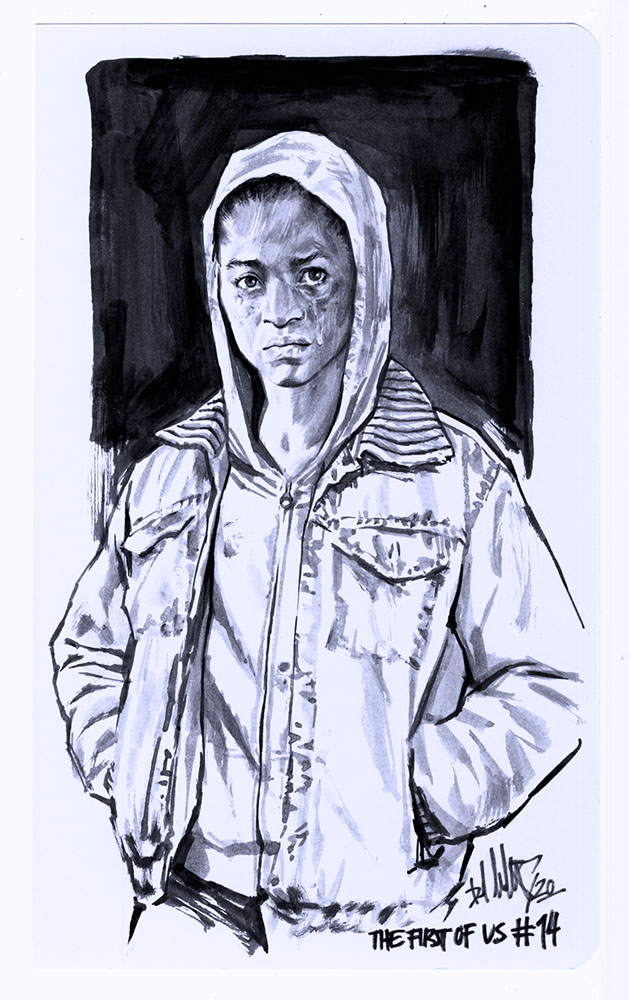
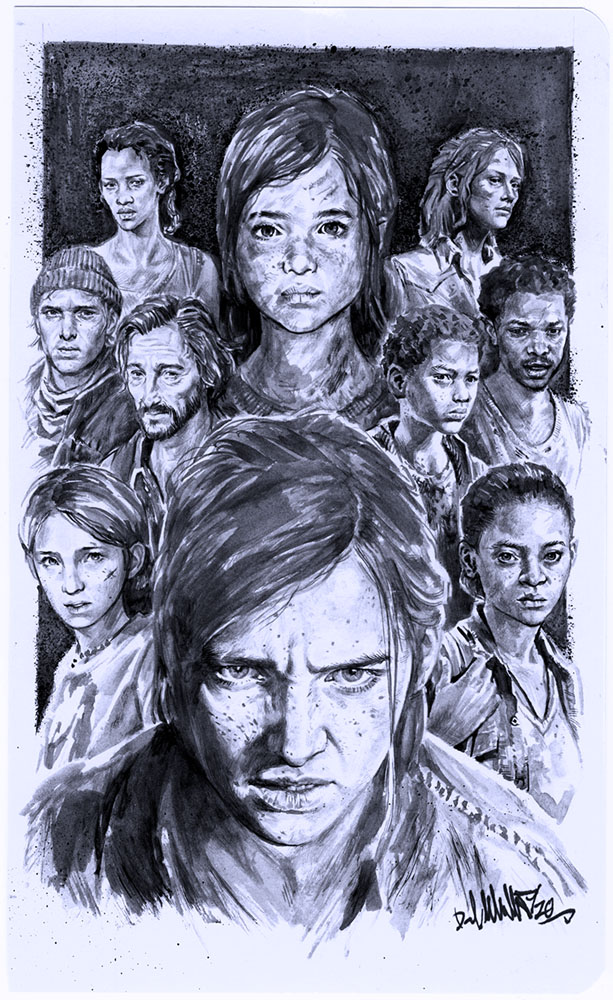
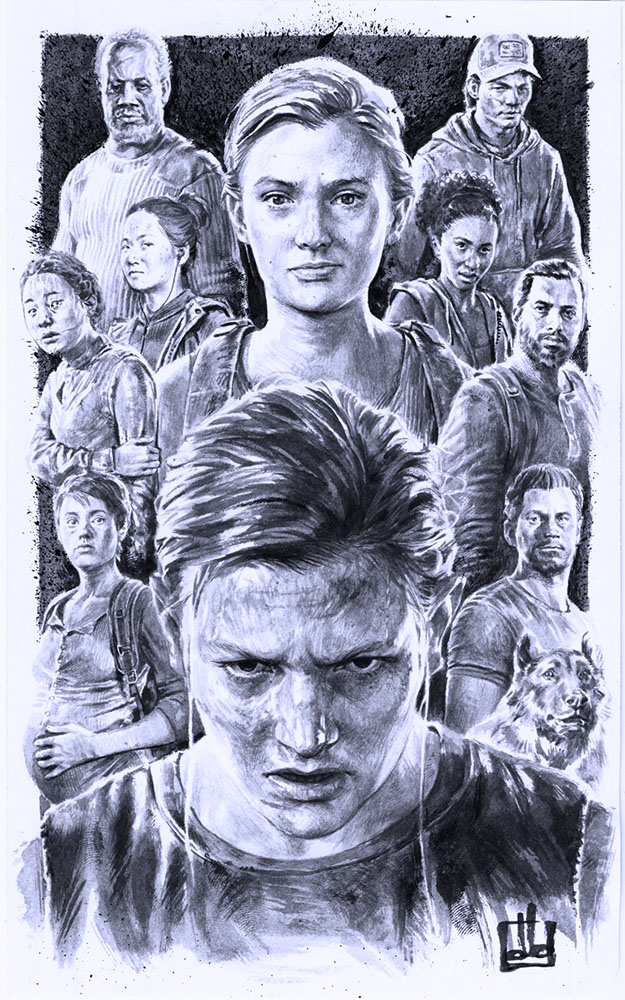
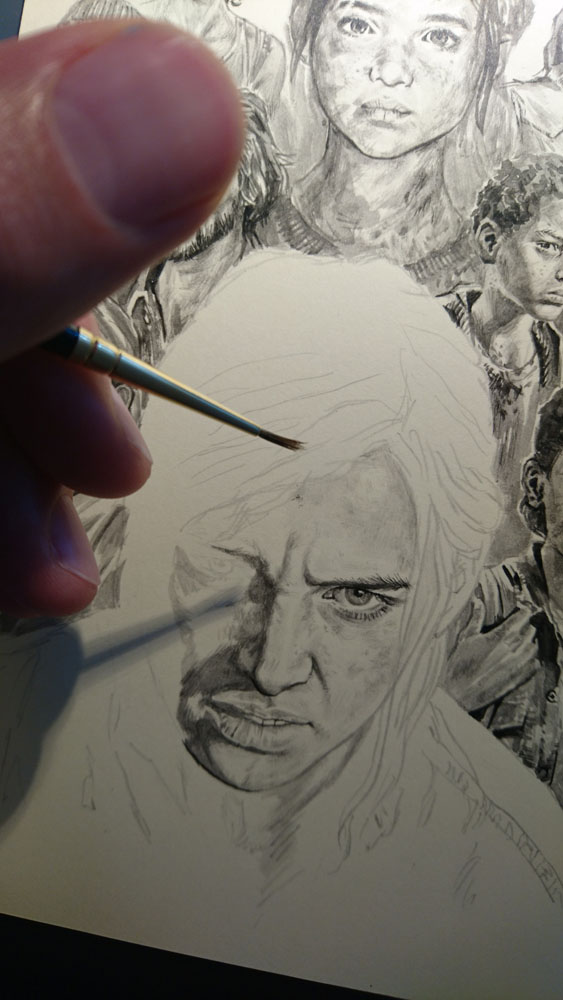
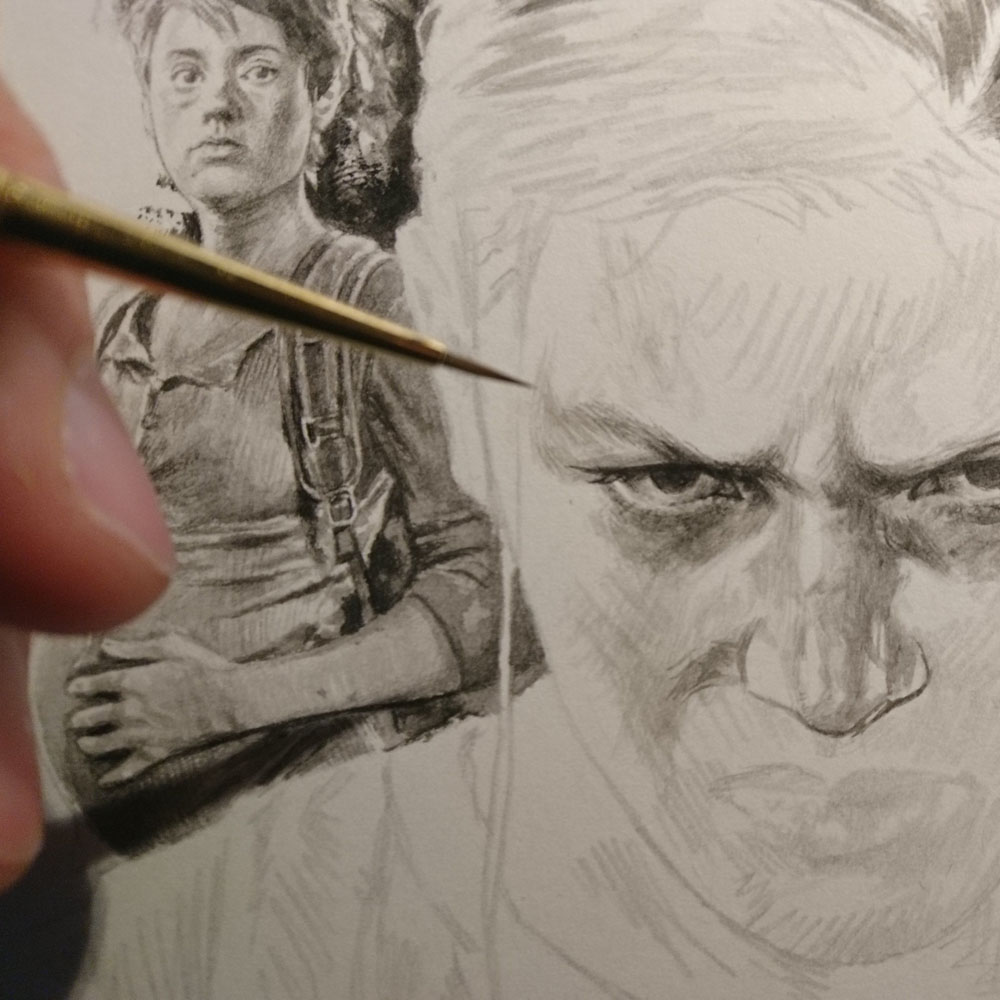
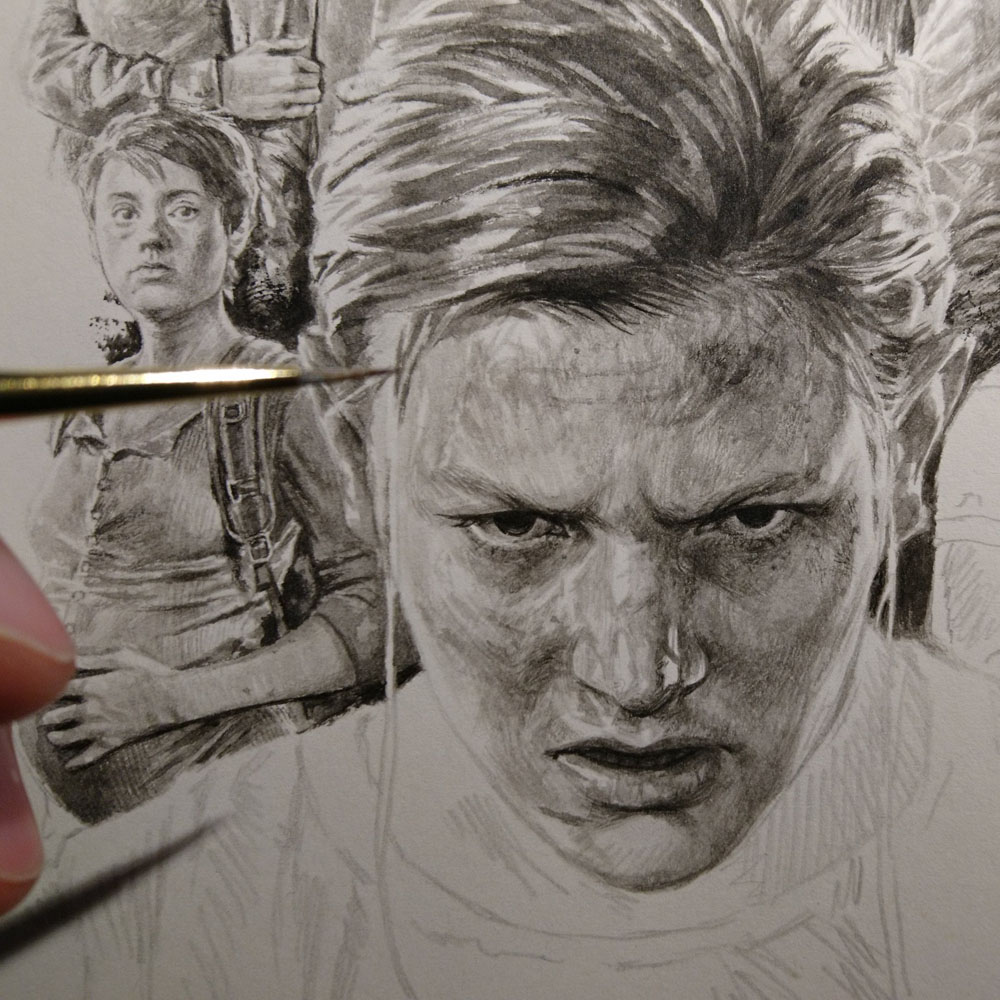
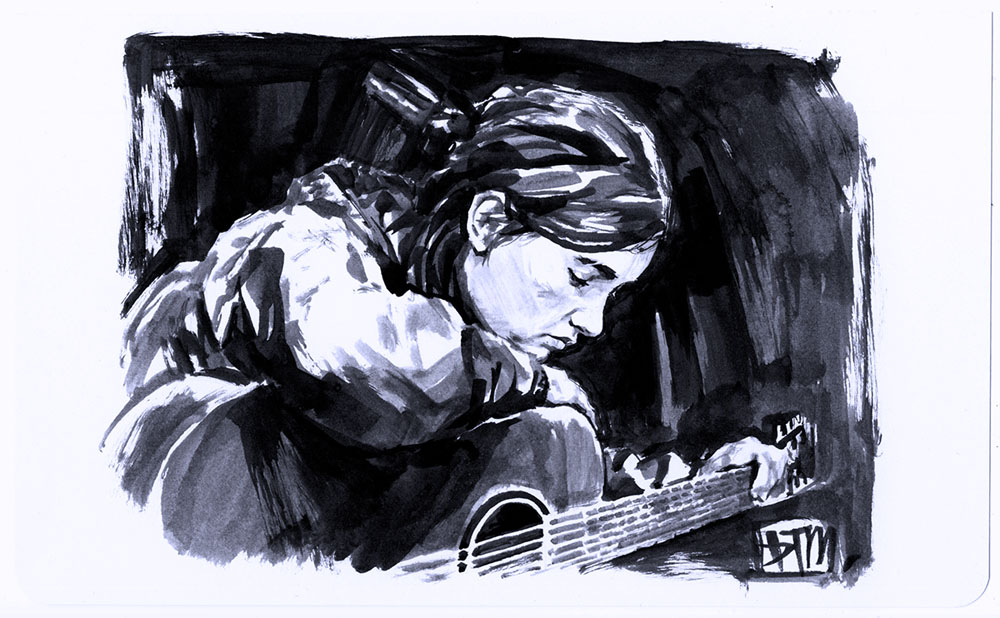
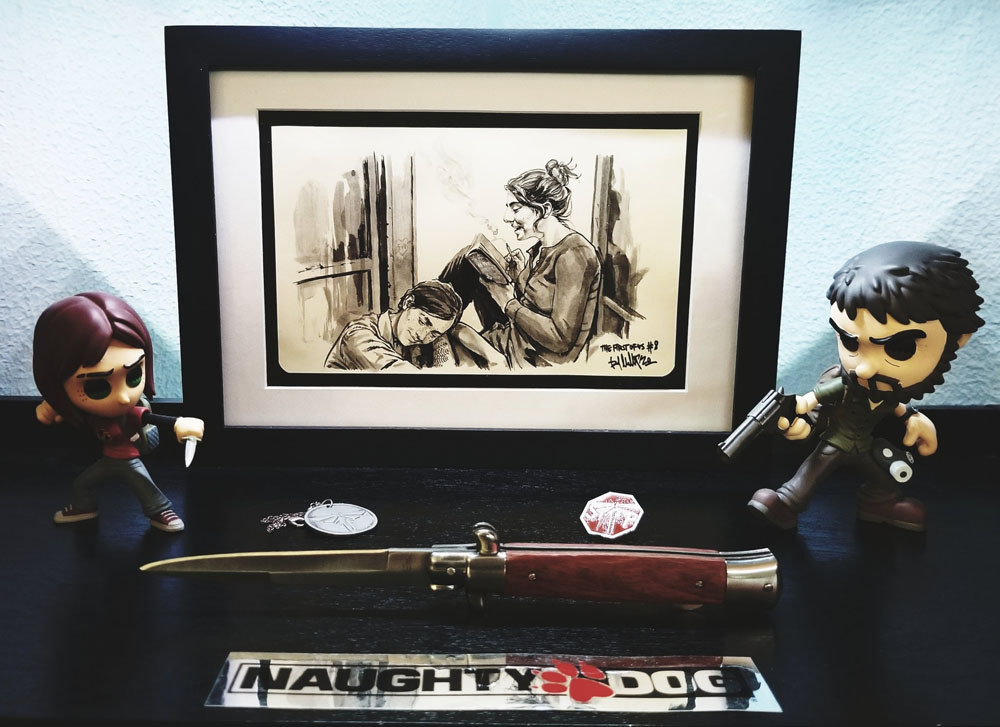
The private commission I did for Neil from Naughty Dog also was an unforgettable experience in many ways! It was a real challenge, not only because I had never worked on a larger scale with ink, but also because I had to find the best paper for it during the peak phase of the pandemic. In addition, after shipping from Germany to the USA, the drawing seemed lost for a long time and after weeks of worrying, countless calls and emails with DHL and Neil, the drawing was finally in Neil’s hands. What a rollercoaster. Crazy story… Even though it almost ended in a heart attack, it’s now honestly one of my favorite experiences and memories when it comes to projects I’ve done.
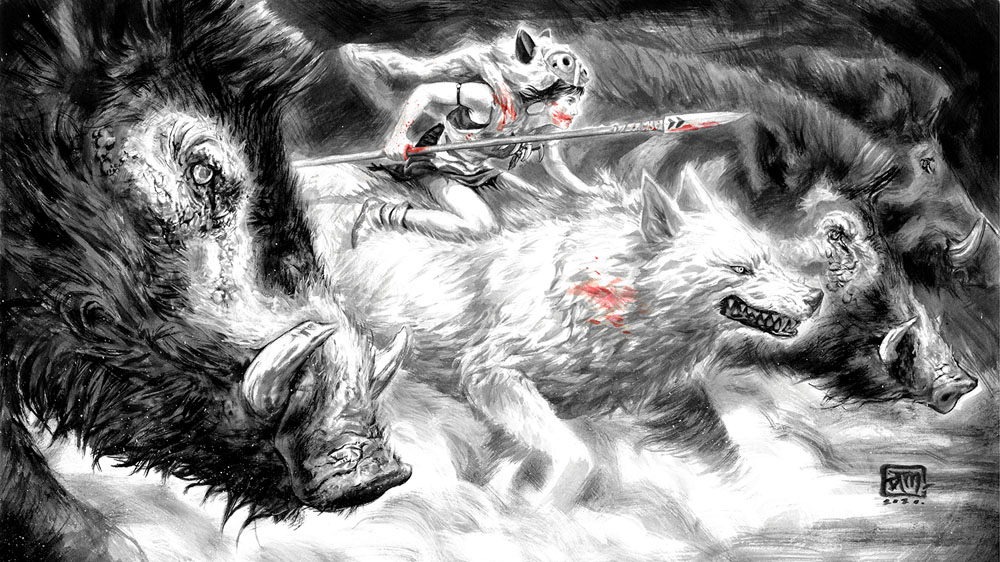
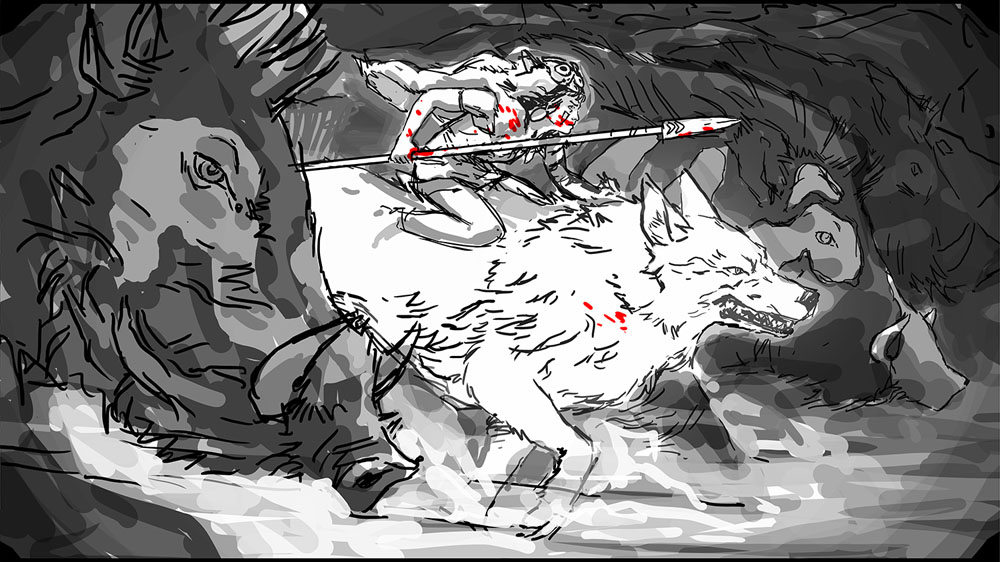
And finally my Berserk Tribute “Black Sun.” I’ve done a lot of Berserk art over the years, it’s probably the only thing I come back to again and again besides The Last of Us. The world Miura created will always be one of my favorites and I think I never put more time and effort into a painting before. I just felt the need to do a proper artwork to thank him for everything he had created. His death hit me hard — harder than I expected… I was devastated. Sometimes I imagine he saw one of my Berserk works while still alive. That would be a dream come true. Rest in peace, legend.
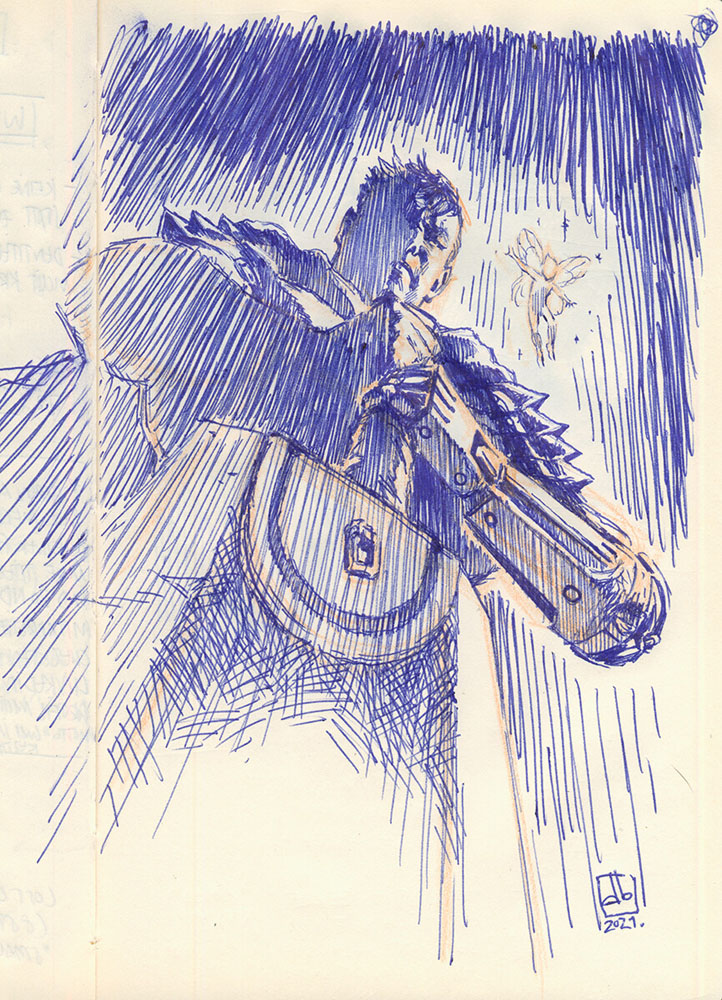
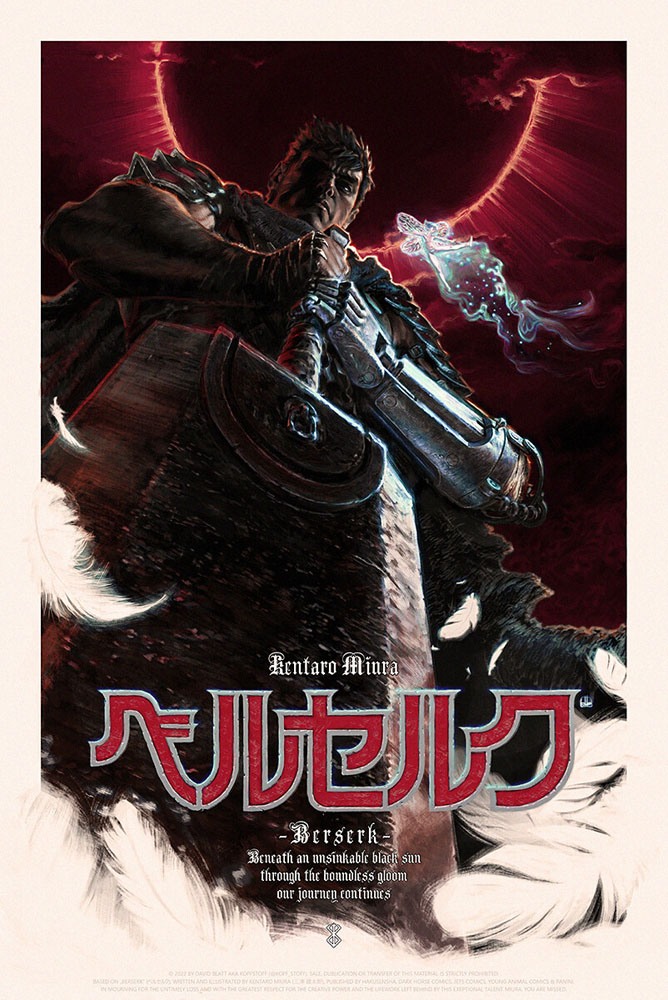
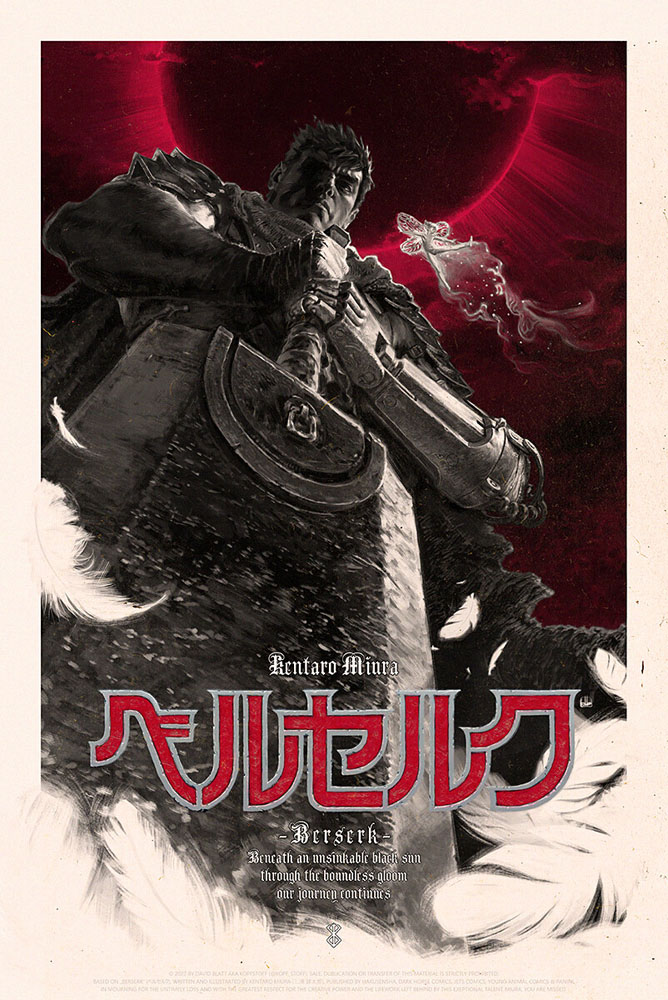
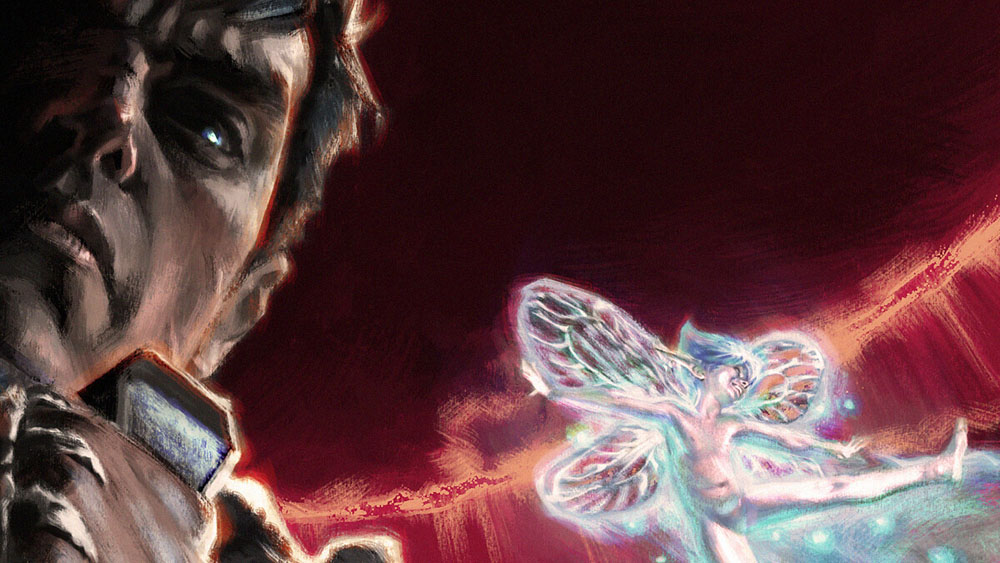
Back to The Last of Us. This game is a cultural touchstone — did you feel nervous about working on such an iconic creative property?
Not really nervous, just incredibly grateful to be honest. It’s one of my biggest dreams finally coming true. Maybe I instinctively went into the “professional” mindset to protect myself from going totally crazy about what I was actually doing. It certainly helped that I’m really familiar with the characters, their backgrounds, characteristics and looks. It’s as if you’ve been training for a race on the same track for 9 years and then finally get the chance to prove your skills in a real race on that same track.
John Sweeney, art director of The Last of Us Part II once said to me: “You need to work on that franchise, you’ve got the characters down.” To this day, that is one of the most uplifting and beautiful compliments I have ever received — precisely because the franchise is so important to me. It was incredibly fun to be able to officially work on these characters with the creators themselves. A fantastic experience!
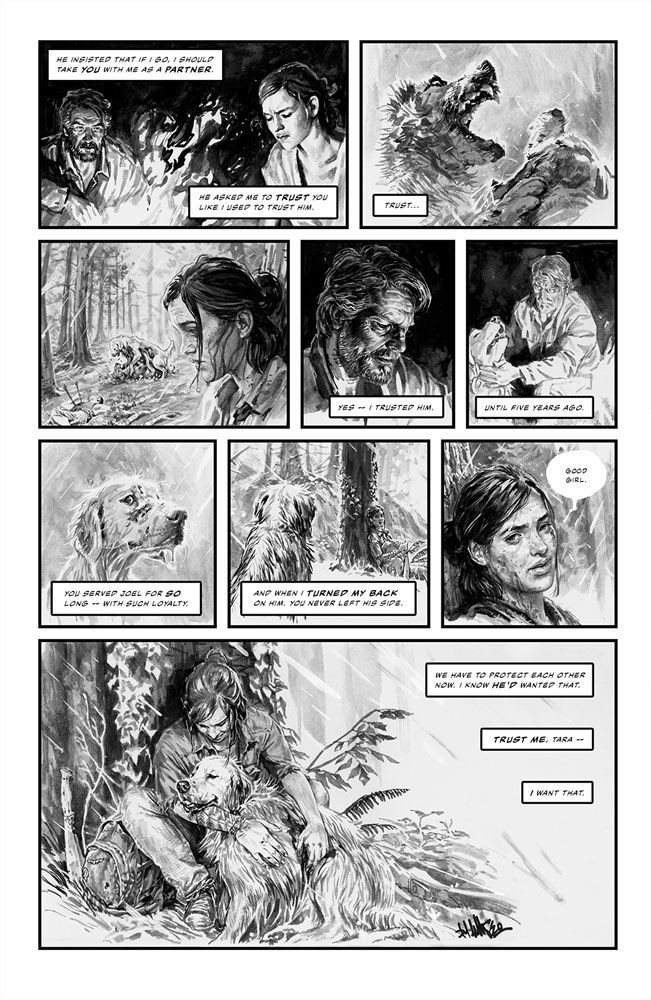
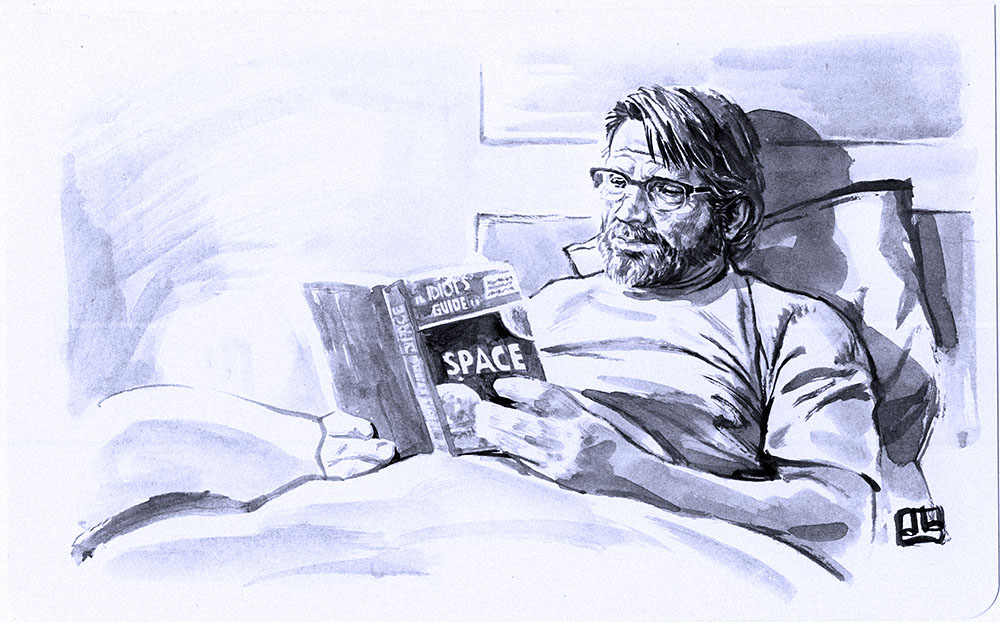
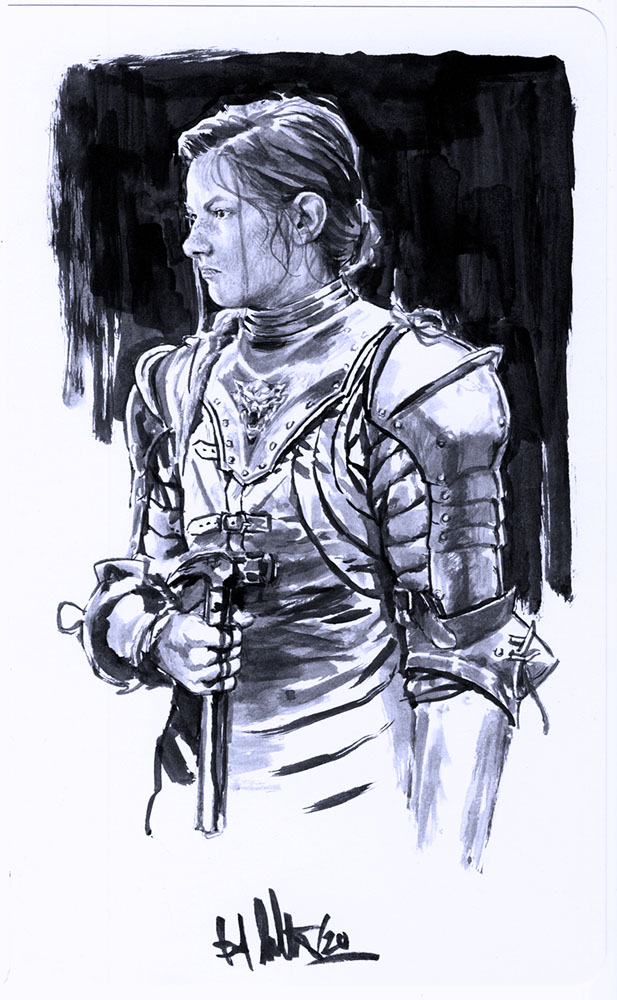
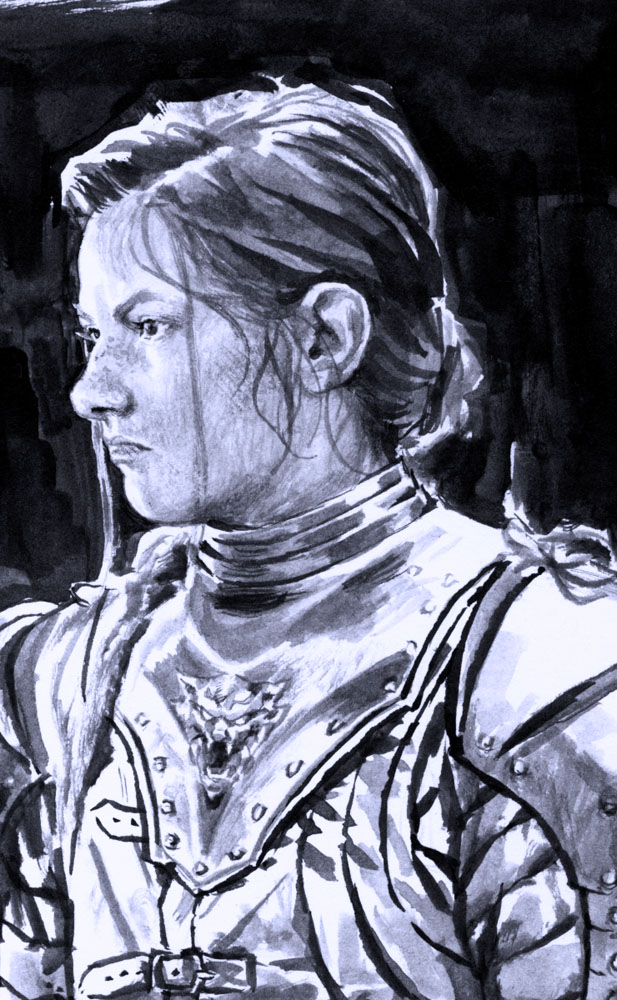
Did Naughty Dog’s art director have a set vision for the artwork or did you come up with the concept yourself?
Yes and no. In the debrief document for the steel book and the comic covers Naughty Dog had placed some of my own black and white works as references for what direction they had in mind, but it was really about seeing my ideas and visions on this and giving me a canvas on which to express myself freely. They even allowed the possibility to go full color, completely digital or analog. There was one guideline for the comic covers: I should imagine it would be a limited, artistic edition that could be seen in a museum — similar to Criterion Collection covers in film.
For the main key art the whole composition / final sketch had already been planned when I started working on it. Only with Joel there were still a few things to be solved and adjusted while going into the digitally colored version. Here we played around for a bit and found the best solution together in a few nice video-call rounds of brainstorming.
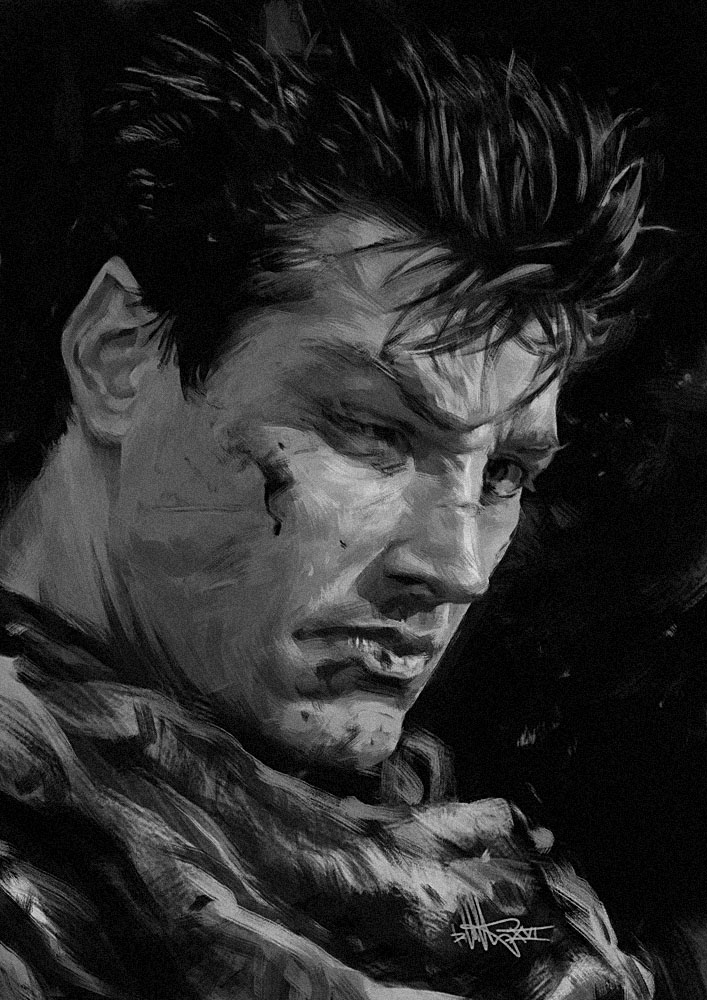
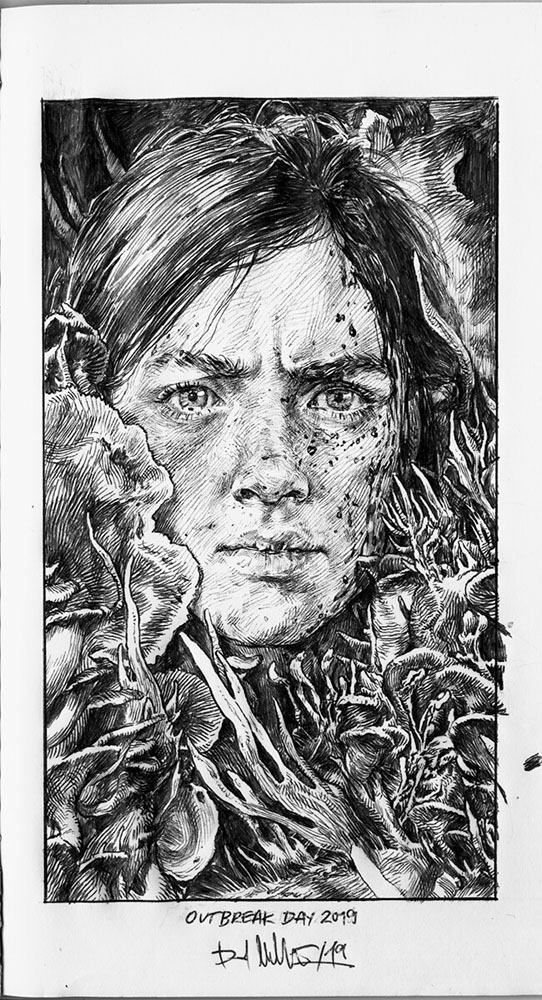
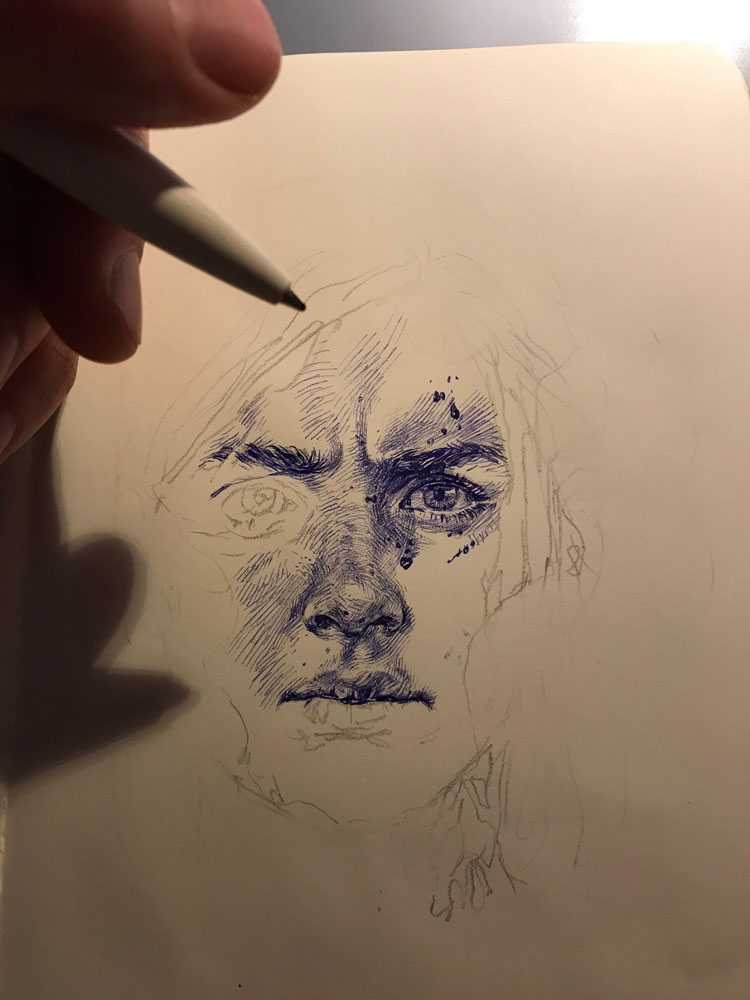
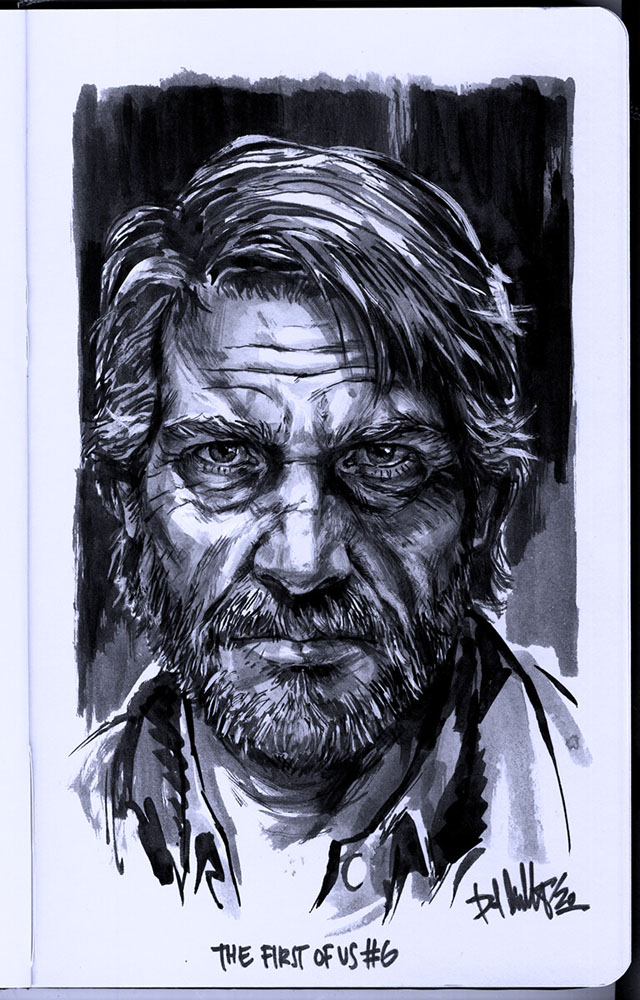
How did you approach the creation of the different covers?
I started working on the steelbook and comic covers like I always do with every project. Usually I have the basic concept already in my head. After a few sketches or without doing any preparatory work, I start looking for references. I often go into great detail, if I can’t find what I’m looking for I force my wife to take certain poses or take selfies. This process often takes longer than some might expect… and this is where the real work lies in my opinion. Nailing down the perfect sketch/layout first and finding the perfect references to work with. Combining and rearranging these references in my head and then on paper and finally drawing it, is strictly speaking just a (fun) process. In the rarest of cases do I change anything major about the picture after the sketch is ready.
I often do the first sketches digitally, even though the final piece will be analog in the end (pen, ballpen, ink, watercolor or acrylic colors), just because it is way easier to change things on the fly until I or the client are satisfied with the results. I make a pencil sketch out of that final digital sketch and start inking, and then it’s just highly concentrated work and hoping that you don’t screw up — there’s no undo here. ;)
Fortunately, I had no problems like correcting gross blunders or even starting again from scratch. On the contrary, every cover art you see was always the first attempt (I did digitally rework a few minor details of the steelbook cover though). As an example, the faces here are only a few millimeters in size, so it’s not so easy to find the perfect likeness with every real brush stroke and you can only put so much ink on such a tiny spot on paper.
When the ink drawing is finished, I scan the whole thing, adjust the contrasts and make minimal changes or improvements and then I’m done.
In the case of the key art, the process was longer, since all coloring was added digitally. Plus, I had to create individual ink drawings to be able to separate different layers digitally while keeping the analog look and feel, sp so that I could meet the conditions of a Sony key art file. Each image format is generated from one final file. I got several PDF documents for understanding the topic and a dummy file to place my work inside too. The main characters (Ellie and Joel) as well as the effects (Joel’s ground and fog) are individually hideable and freely movable (the whole background is one continuous painting), so that Sony can place and arrange everything as required for marketing.
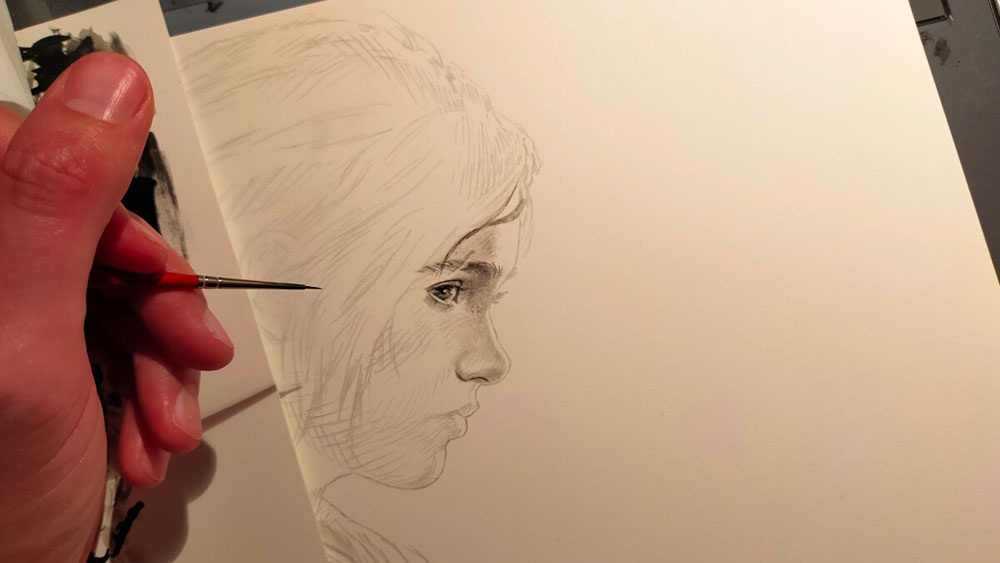
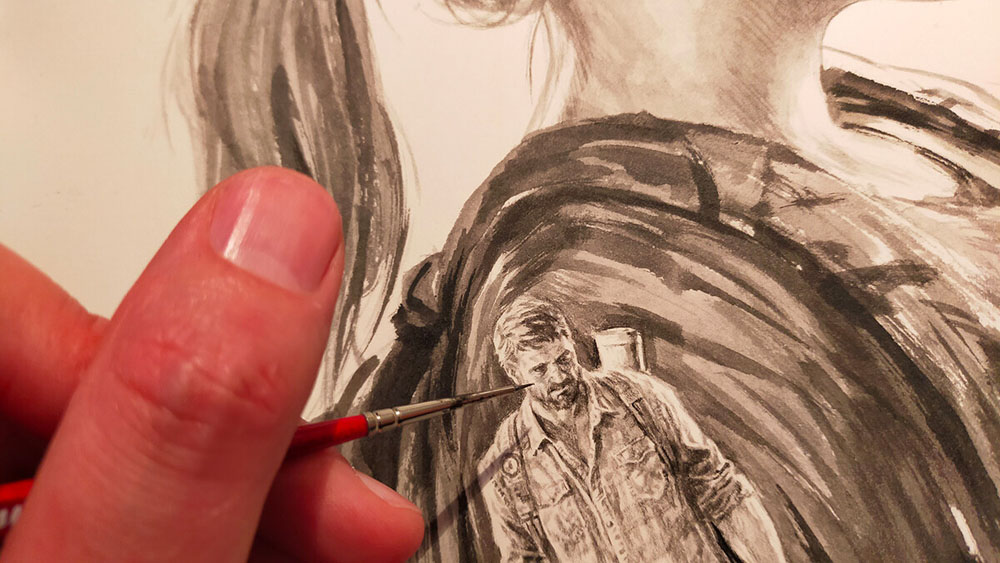
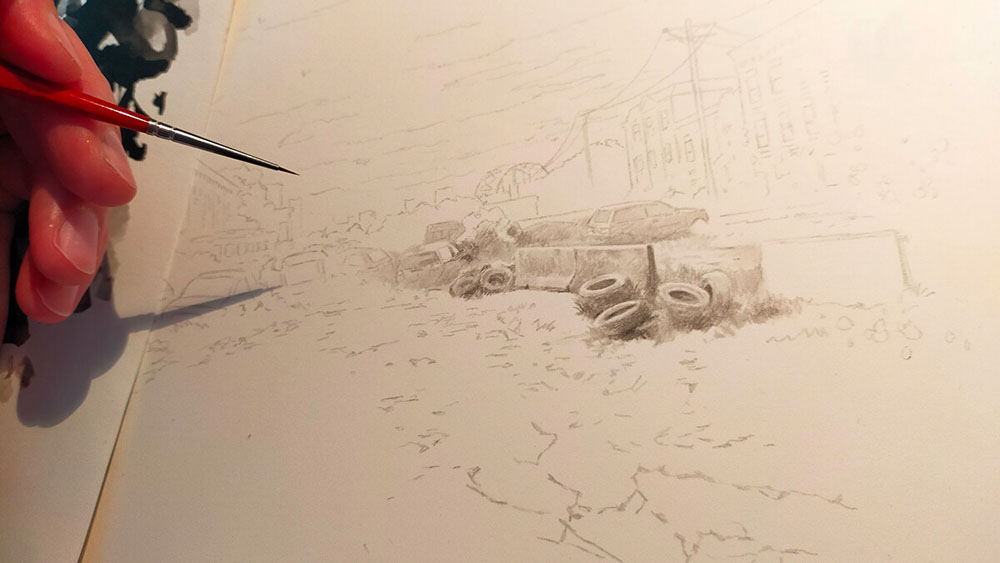
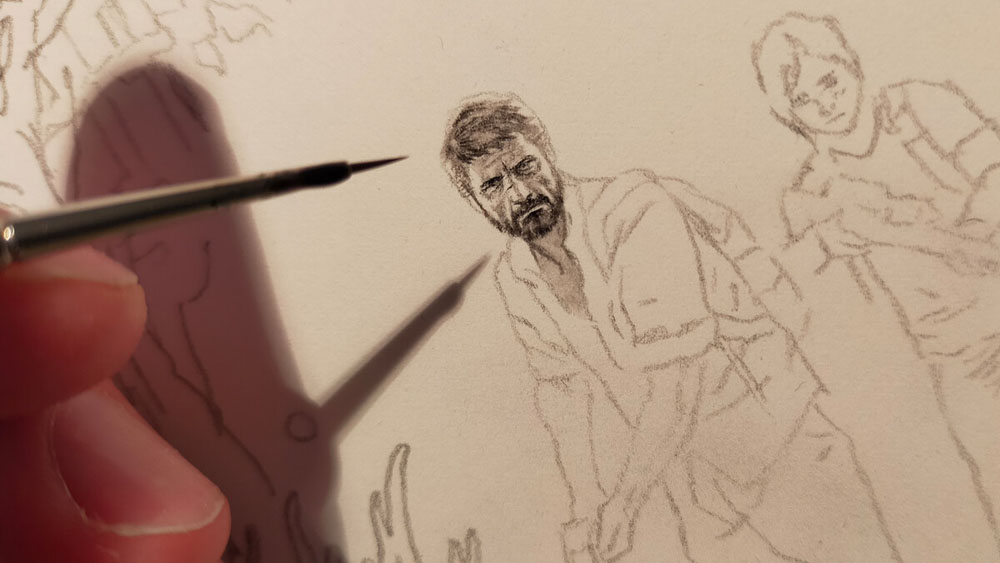
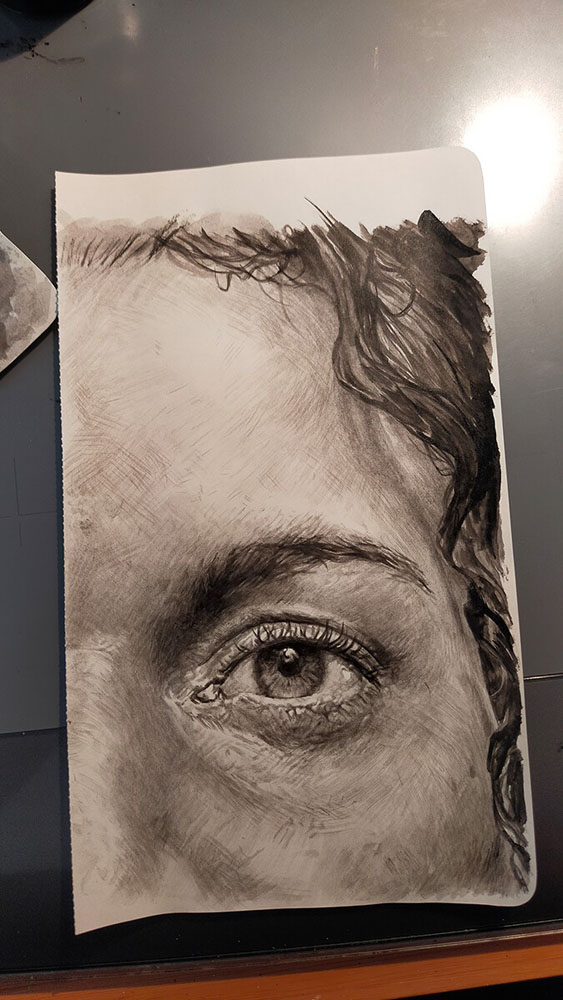
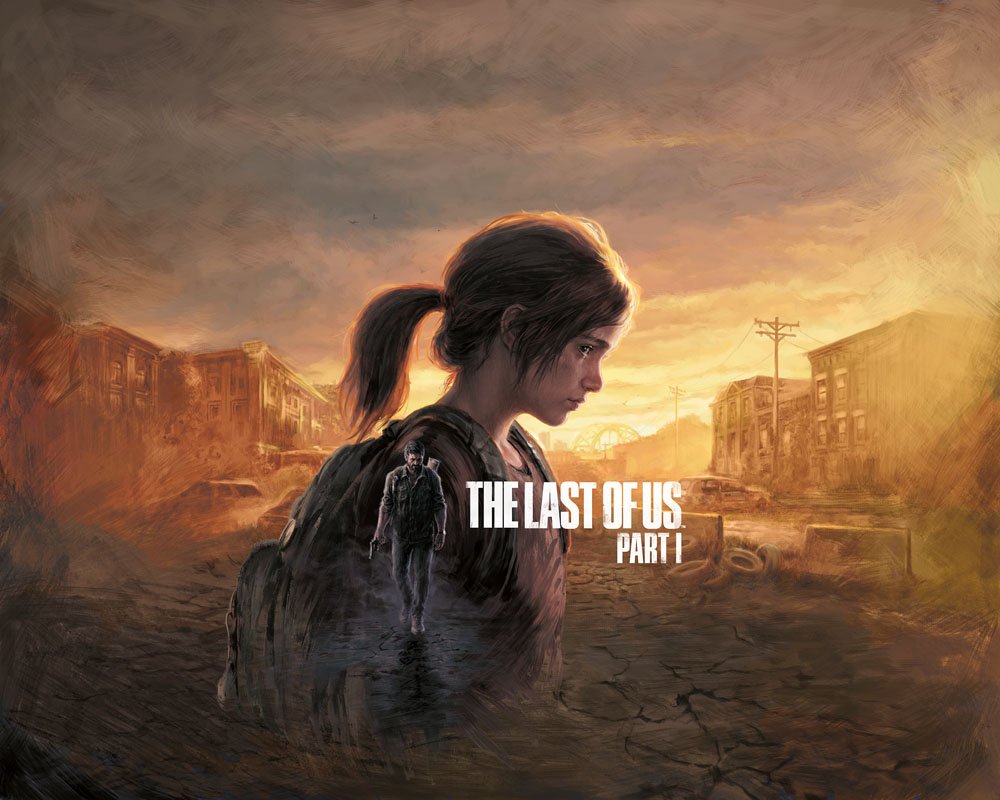
I imagine working with a major video game studio is a very structured process. Could you walk us through the project’s logistics and timeline?
Yes, that’s right. I was very impressed by the smooth cooperation, how quickly questions were answered and the structured way that everything was documented and managed. After the NDA was signed, I received a brief in which all the necessary points were dealt with in a way that was easy to understand. Details about the project, do’s and don’ts, required data, schedule, contact persons, references… It’s all there.
In further discussions via video call, open questions were immediately clarified and the status of things got checked regularly at review dates set in advance. Since there were inevitably shifts here and there (also due to time zone differences or weekends), I sent updates whenever possible and got feedback all the time, regardless of fixed dates. I had about a month for the steelbook cover and the four comic covers together plus an additional week for the key art.
How many iterations of the artwork did you end up going through?
I actually pitched a lot of sketches, I think it was five sets of four for the comic covers and about four versions for the steelbook in the beginning. We then agreed on a version for both and I pushed these sketches further before starting with the final artworks. I remember there were a few smaller requests for the steelbook — always comprehensible suggestions and really good additions. It was a very good cooperation.
It was a bit different with the key art, like already mentioned the final sketch was already there.
What was this project’s biggest challenge?
One, working with such huge file sizes on my old computer — especially towards the end I was afraid several times that I wouldn’t be able to edit the file further. Two, getting the analog drawings scanned. I ended up having to use an A4 scanner to scan my A3 drawing because Amazon couldn’t deliver my A3 scanner on time.
What was its biggest reward?
To finally be able to work officially with the incredibly talented people at Naughty Dog on the characters from The Last of Us for the incredibly good looking remake.
The fact that I am responsible for the key art, the steelbook and the four comic covers covering every cover artwork of the upcoming The Last of Us remake is still amazing to me. I am so grateful for being able to do the whole package.
To see Neil, Troy and Ashley (game director, writer and Co-President plus the main cast from The Last of Us) on stage in front of my key art at the Summer Game Fest was incredible.
Finally, do you have any words of advice for budding creatives?
Artists only show what they consider worth showing! Everyone makes mistakes, is dissatisfied with himself and wants to shine in the best possible light. Every artist looks up to another artist and compares himself to the works of his idols only to find that he is worse than he wants to be. Your idol feels the same way. Never forget that.
Don’t let the first contact with the industry discourage you. The first time as a gear in the capitalist machine can be sobering. Risk is kept low — always; it’s about making as much profit as possible with as little effort as possible. It is often not about original ideas, new untried concepts, individual dreams and visions… It’s about repeating your last success or that of someone else. Everyone wants a piece of the cake. Exceptions prove the rule. Try to find the exceptions, or live with the rule to have a secure source of money and use your resources to work on risky dreams in your free time, when you have the freedom to bear the risk of failure. Alone or in a smaller team. The industry doesn’t have to be the enemy, like I said there are exceptions and when you find them you are a lucky person.
The risky, new ideas which a lot of the “suits” are so afraid of are the new trends of tomorrow. The new, unconsumed thing that redefines all records and is a new standard for everyone else began as a risky idea. Imitating yesterday’s box office hit will never bring you or your client to the top.
One last thing: As an illustrator don’t just look at illustrations for inspiration… Don’t just listen to rap music if you are writing rap lyrics. Always try to get as much input from every possible angle and source as possible. I do get my inspiration from almost every medium. Film, music, technology (machines, cars, planes, etc. for shapes and ideas), photography, paintings, drawings (old and new) and of course concept art. Pay attention to things you like. Try to understand them if you want to use them for your work (doesn’t matter in which way). Have an eye on how and when new trends develop, just don’t steal unique ideas or concepts! I try to build on top of existing stuff I like.
Be kind to others, try to be the best you. Be open minded. It’s hard and not always possible, but that really helps to be a good person and automatically a good artist I think.
